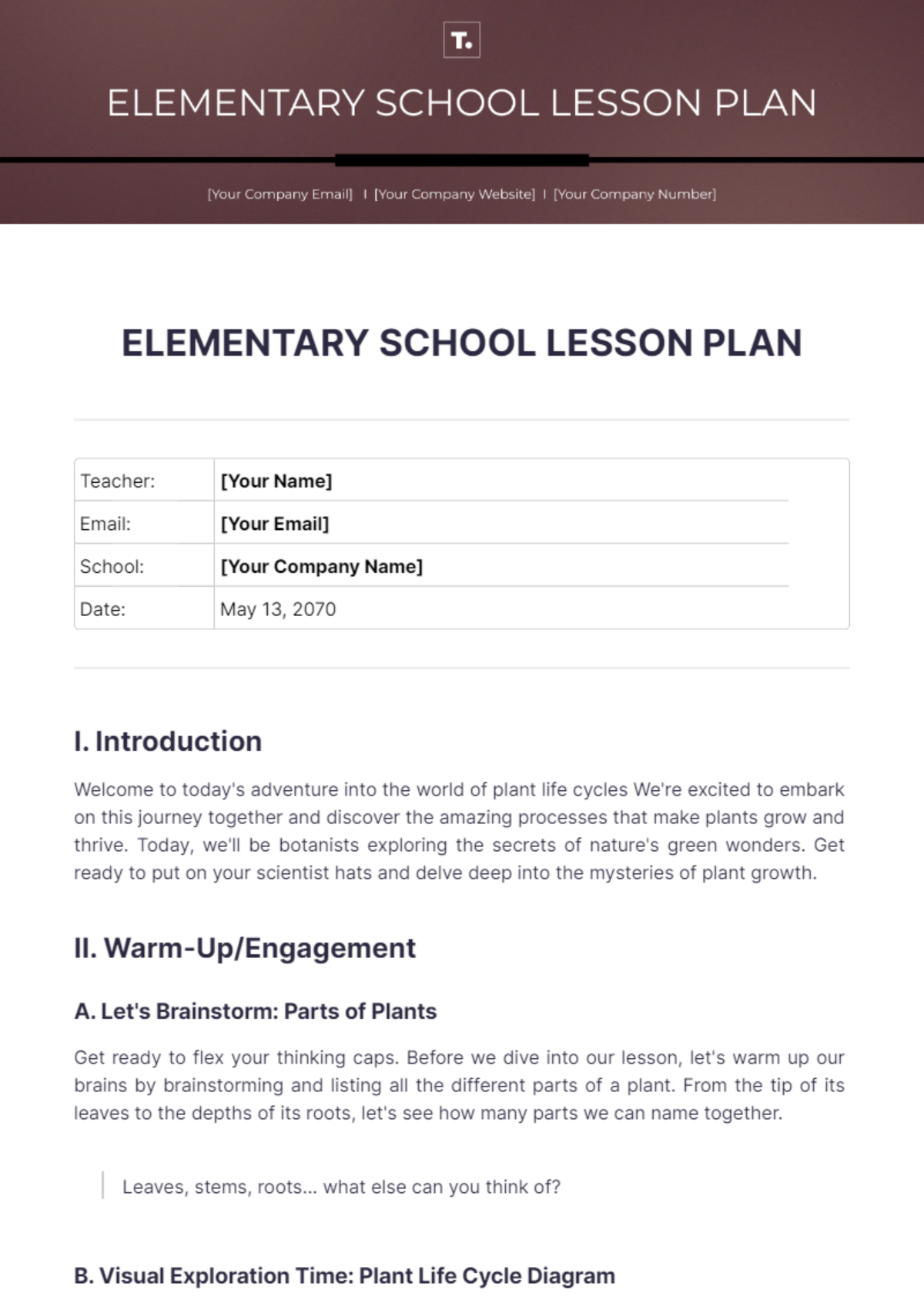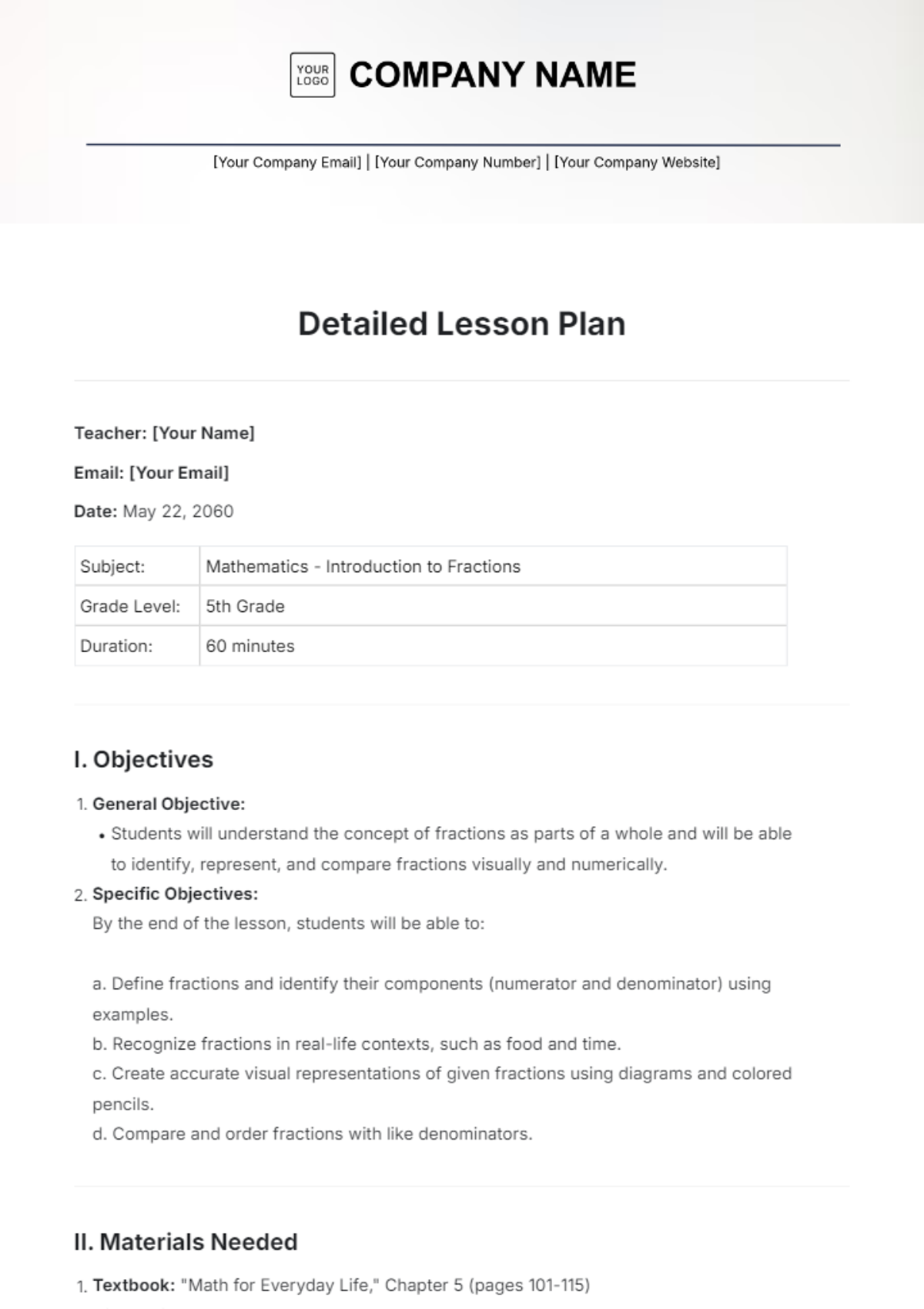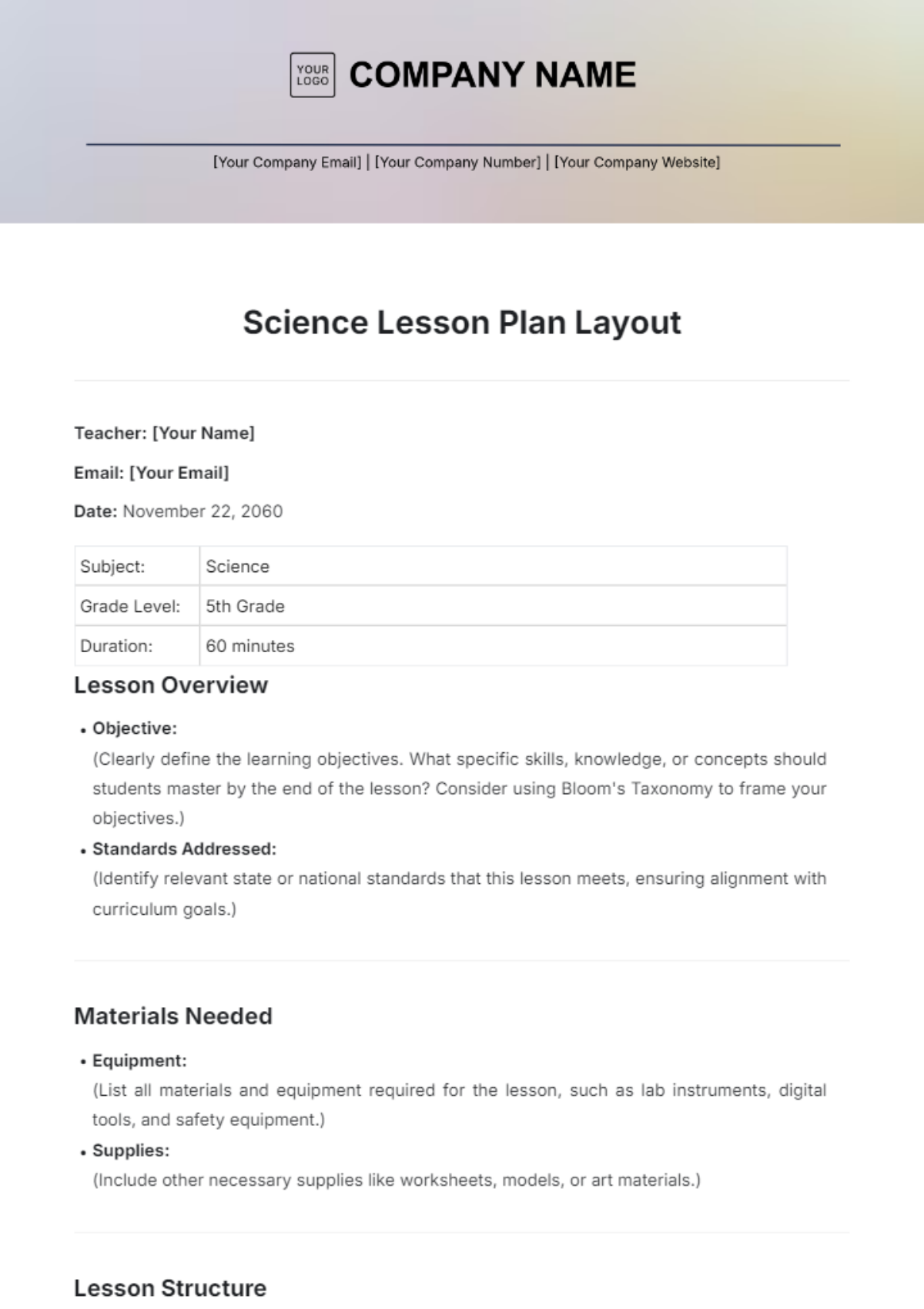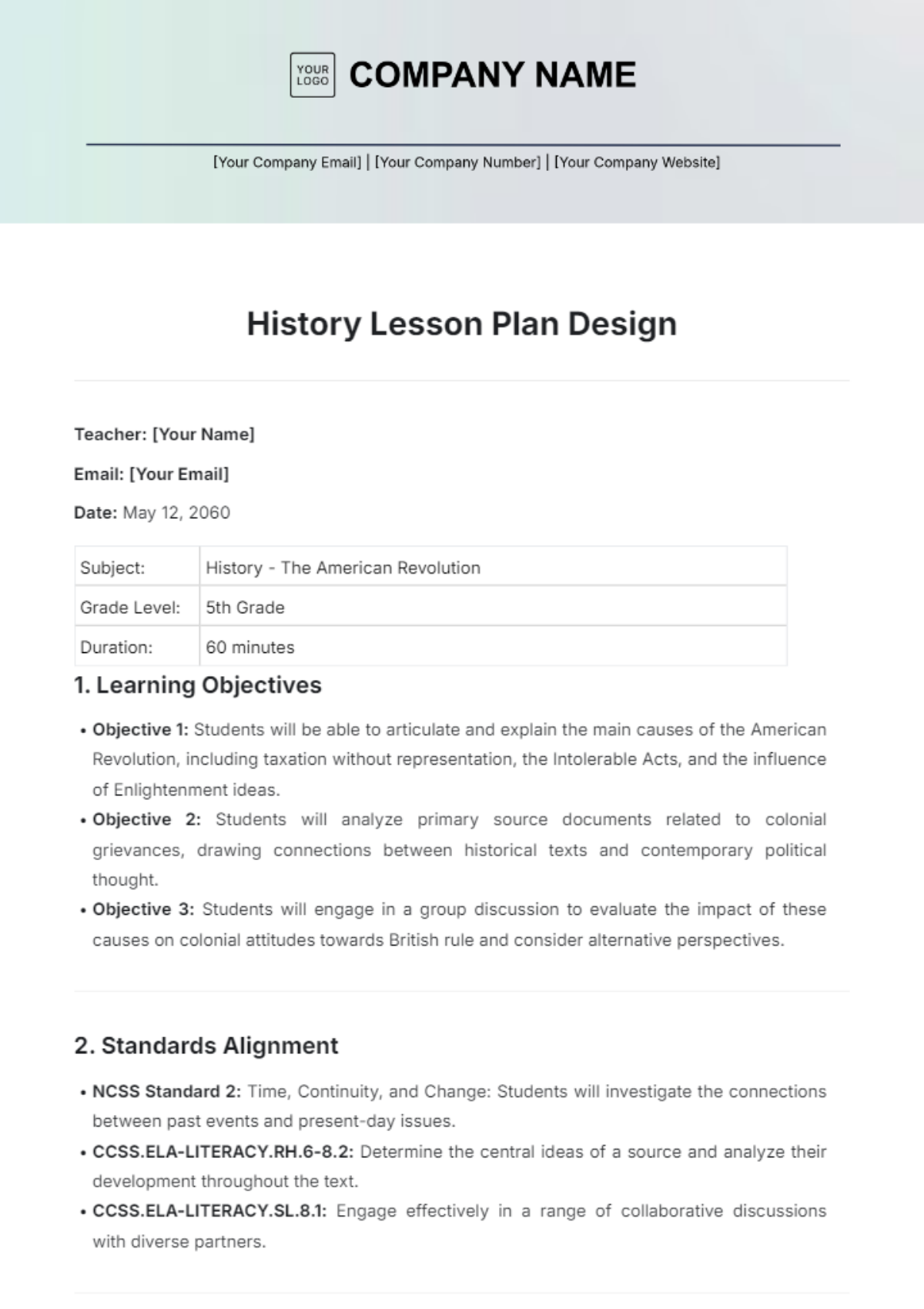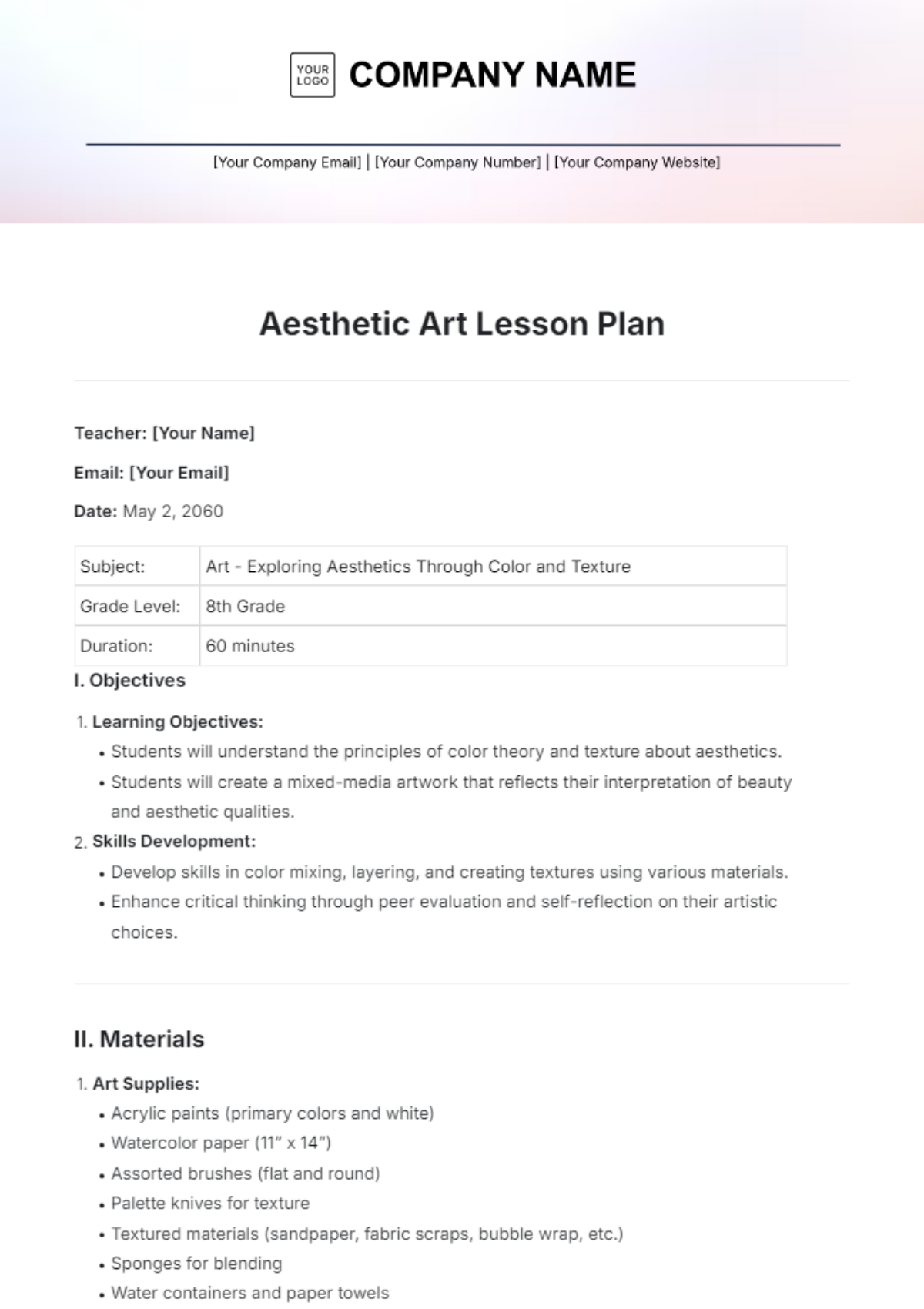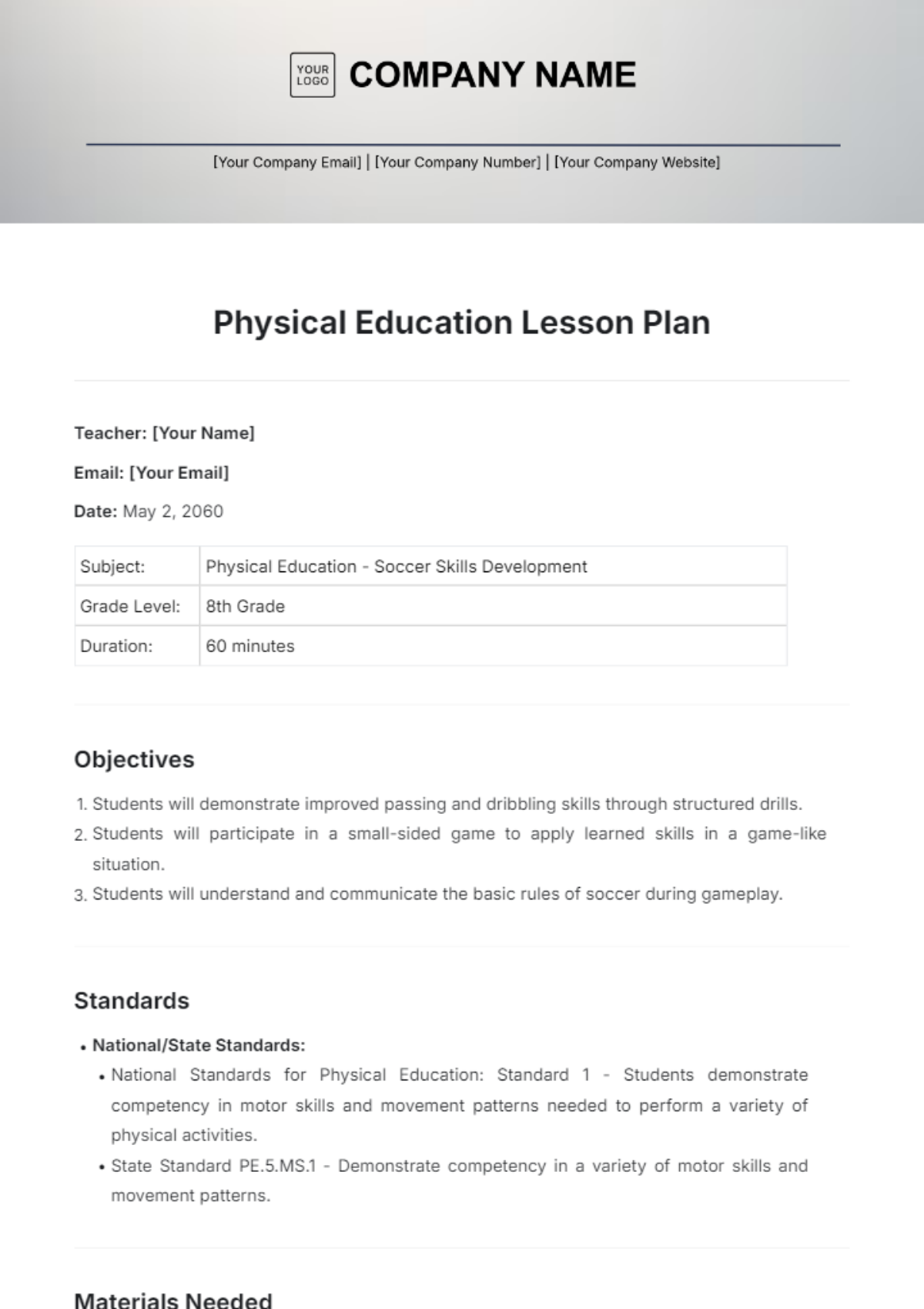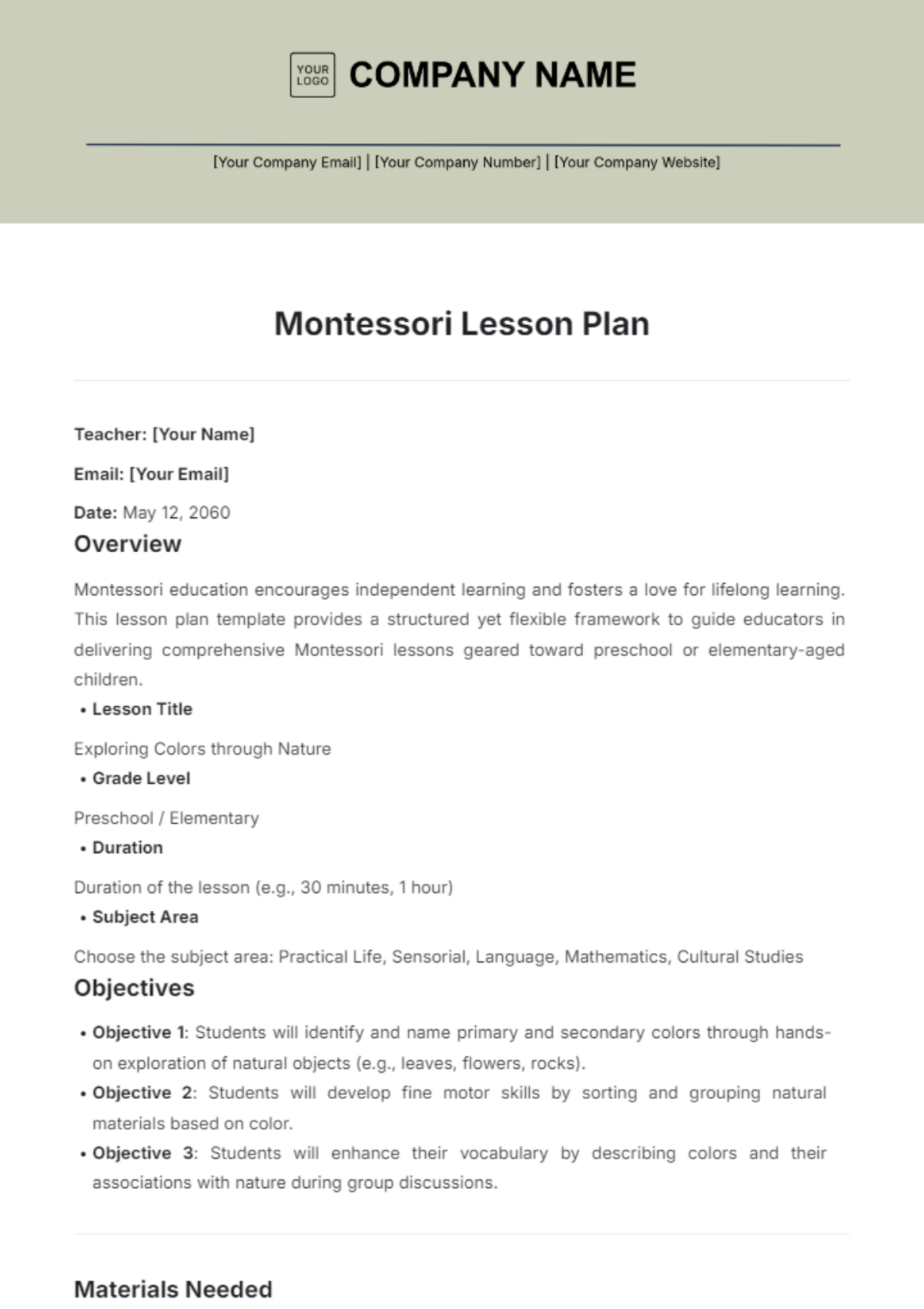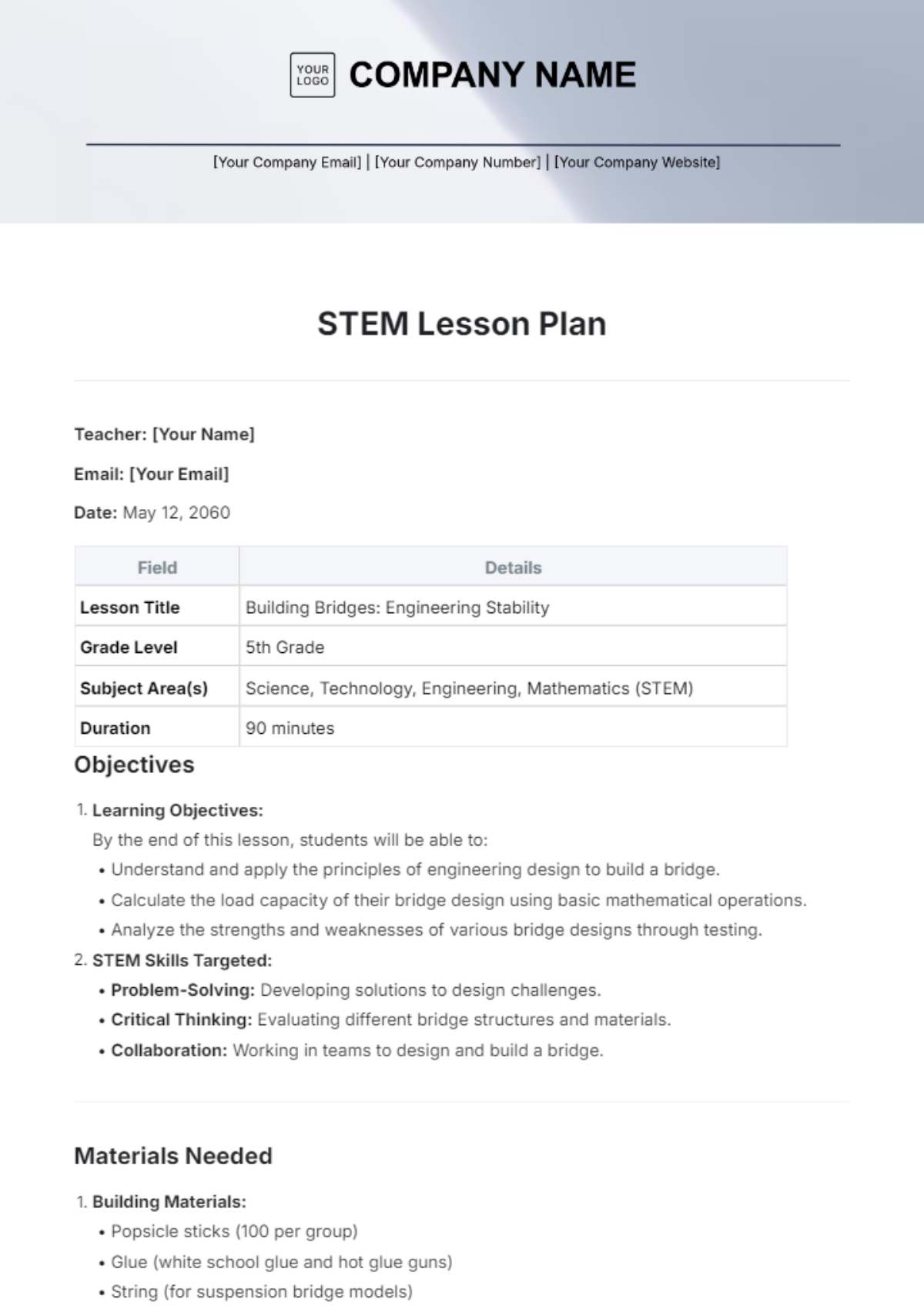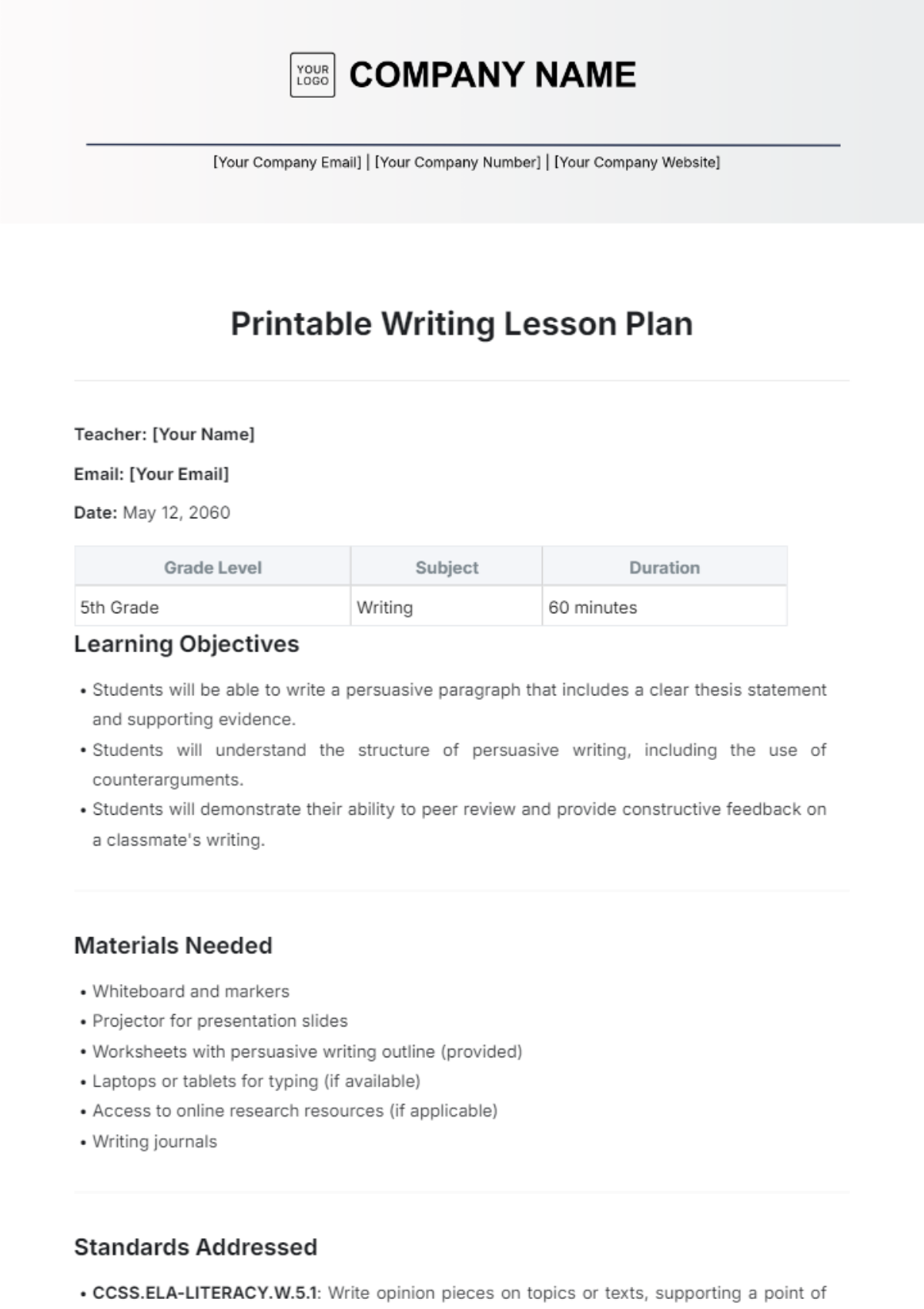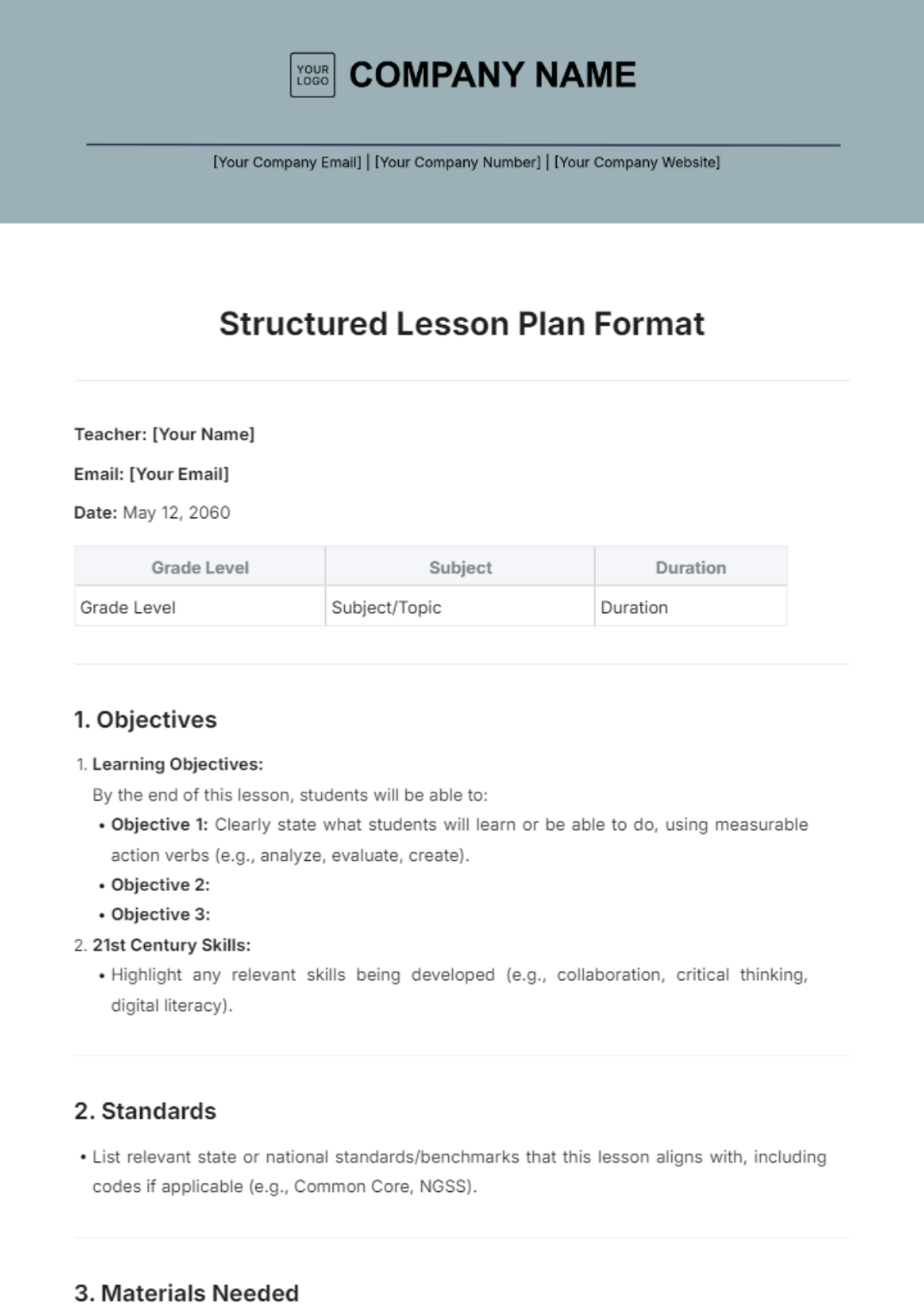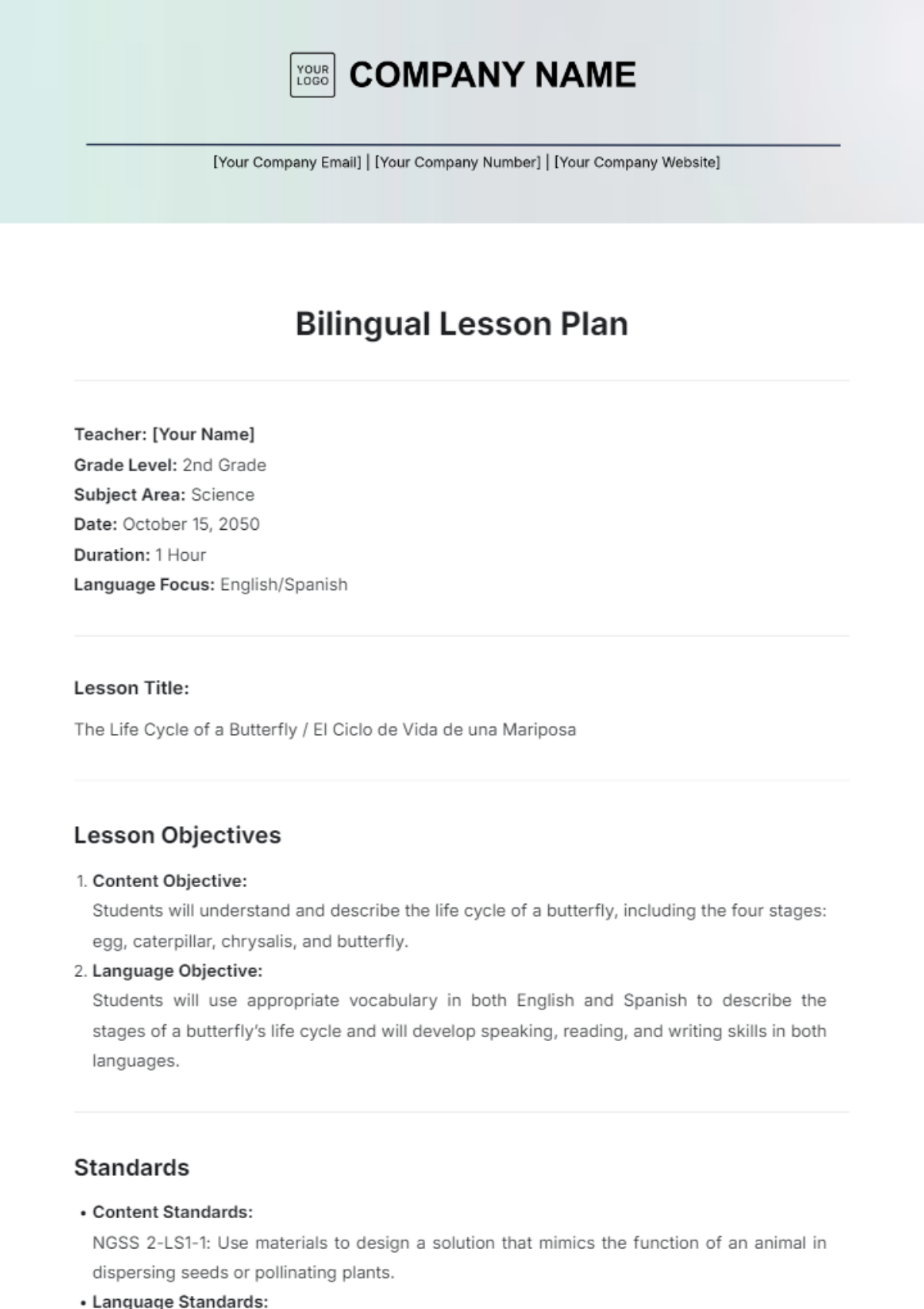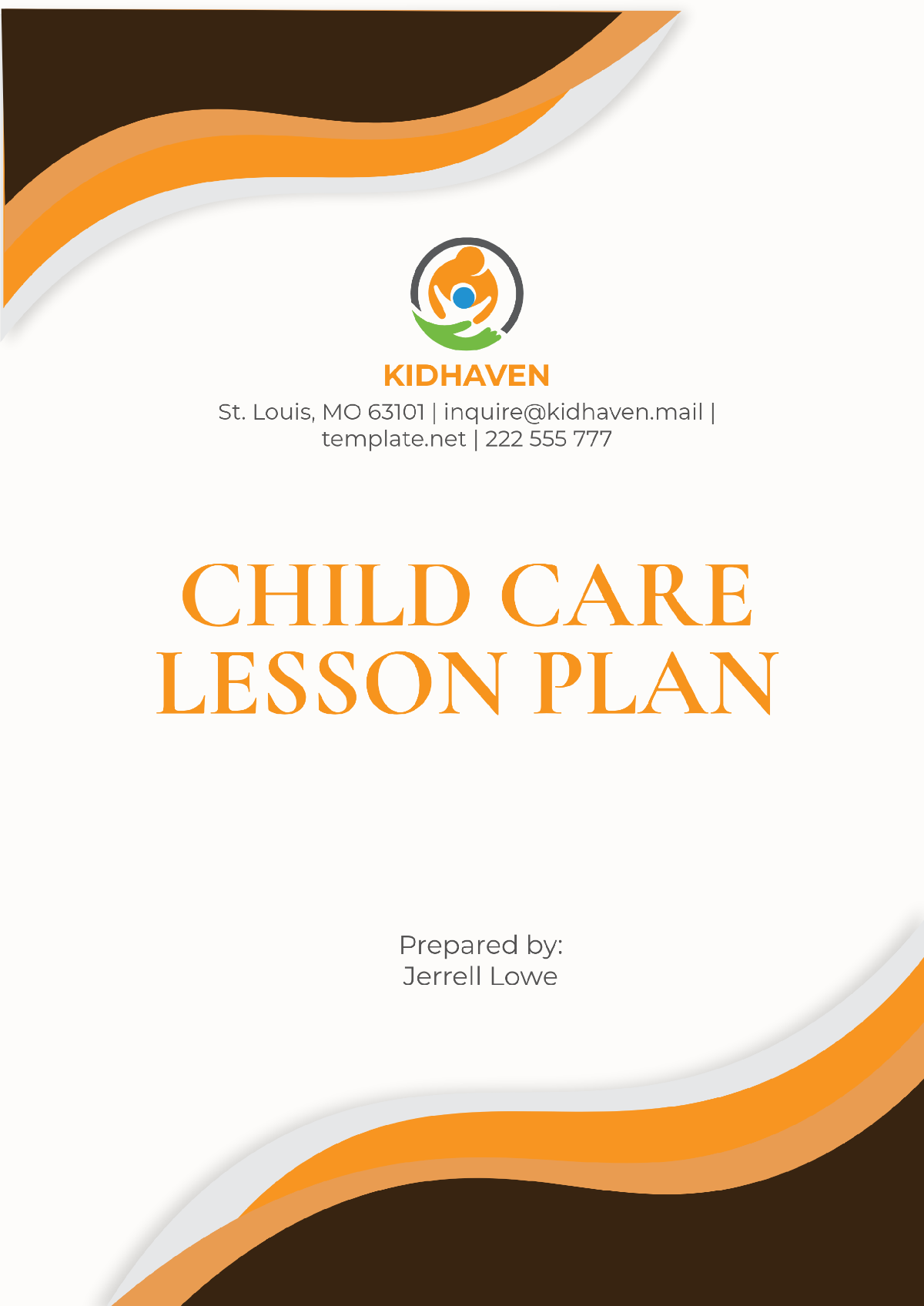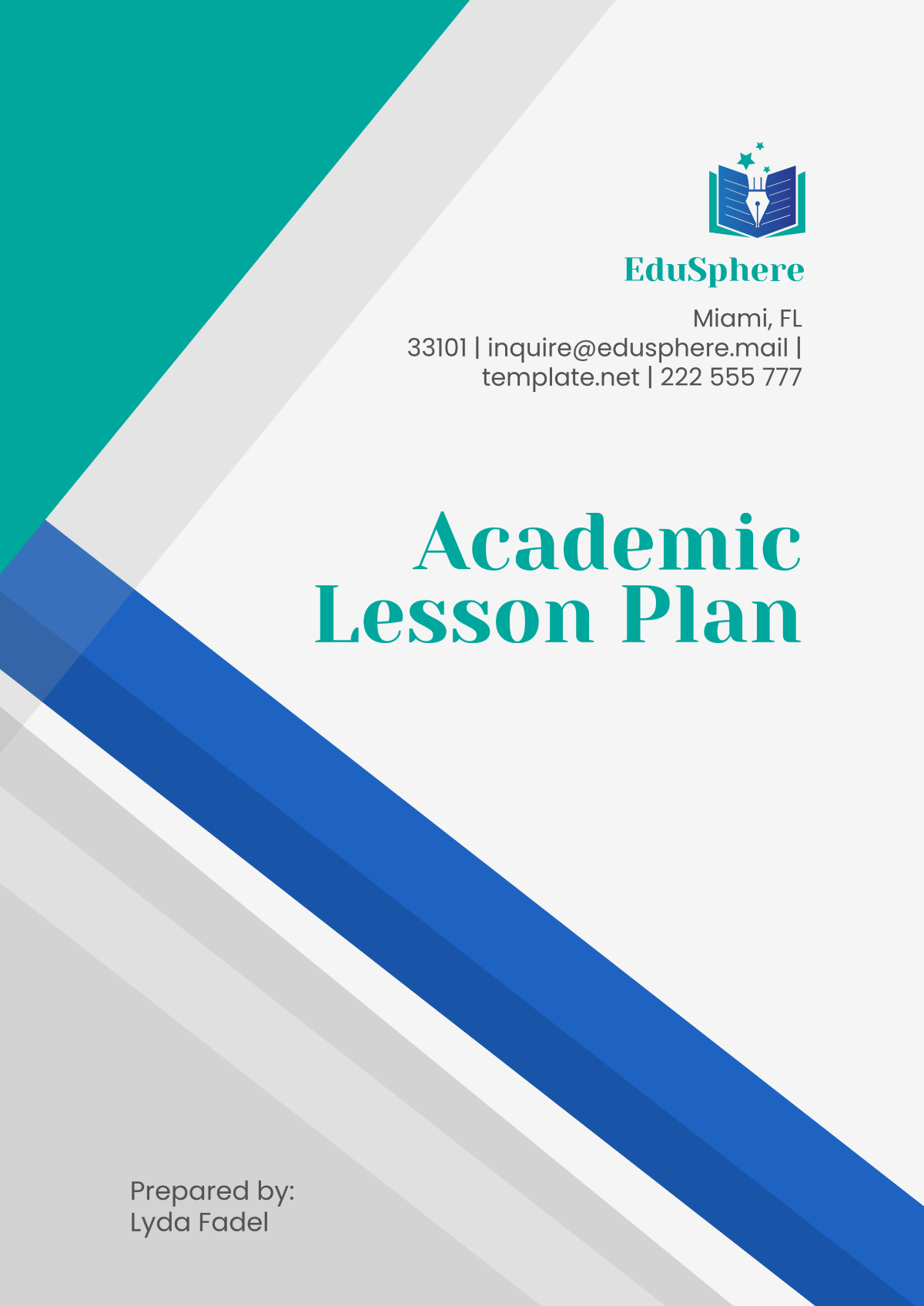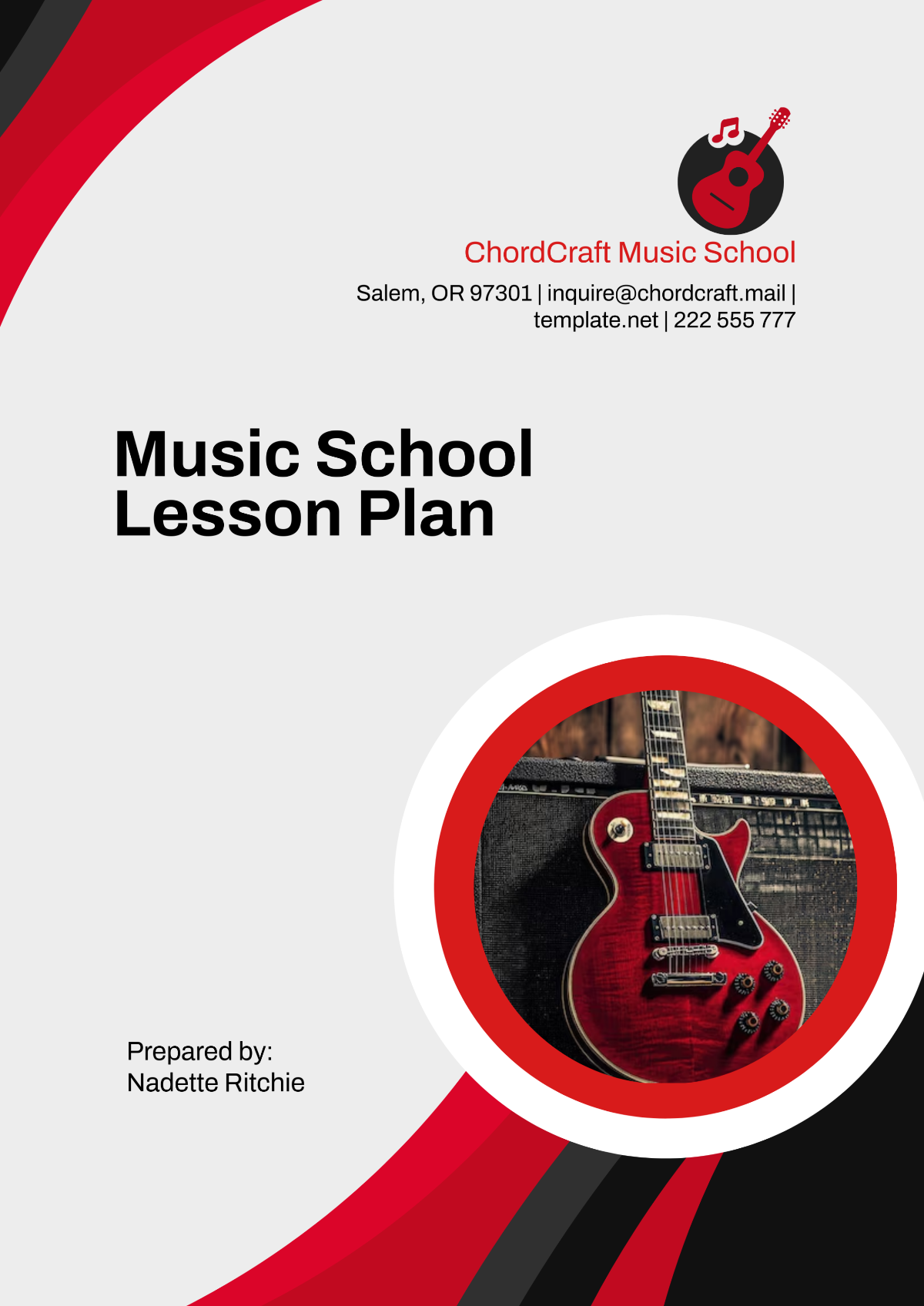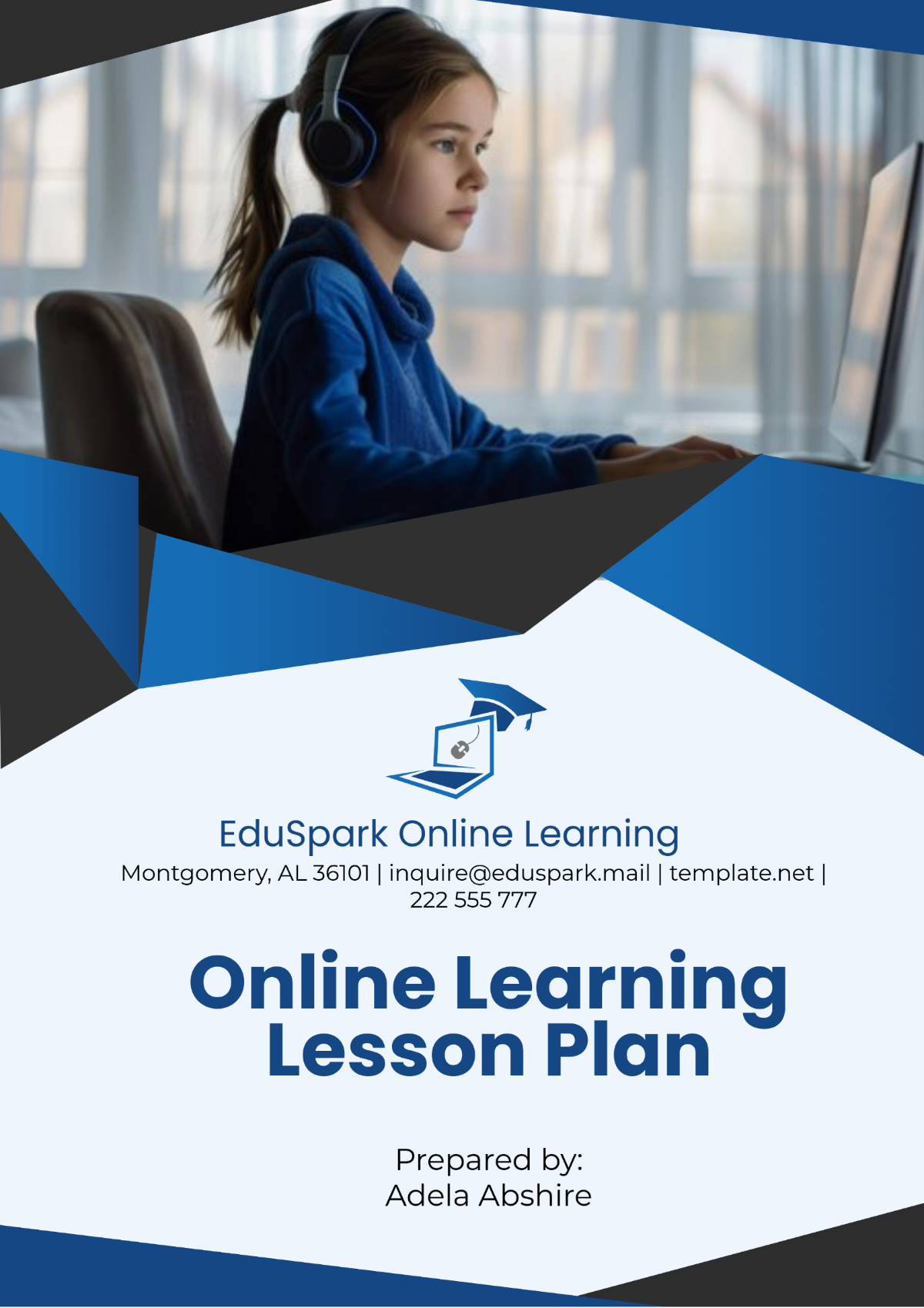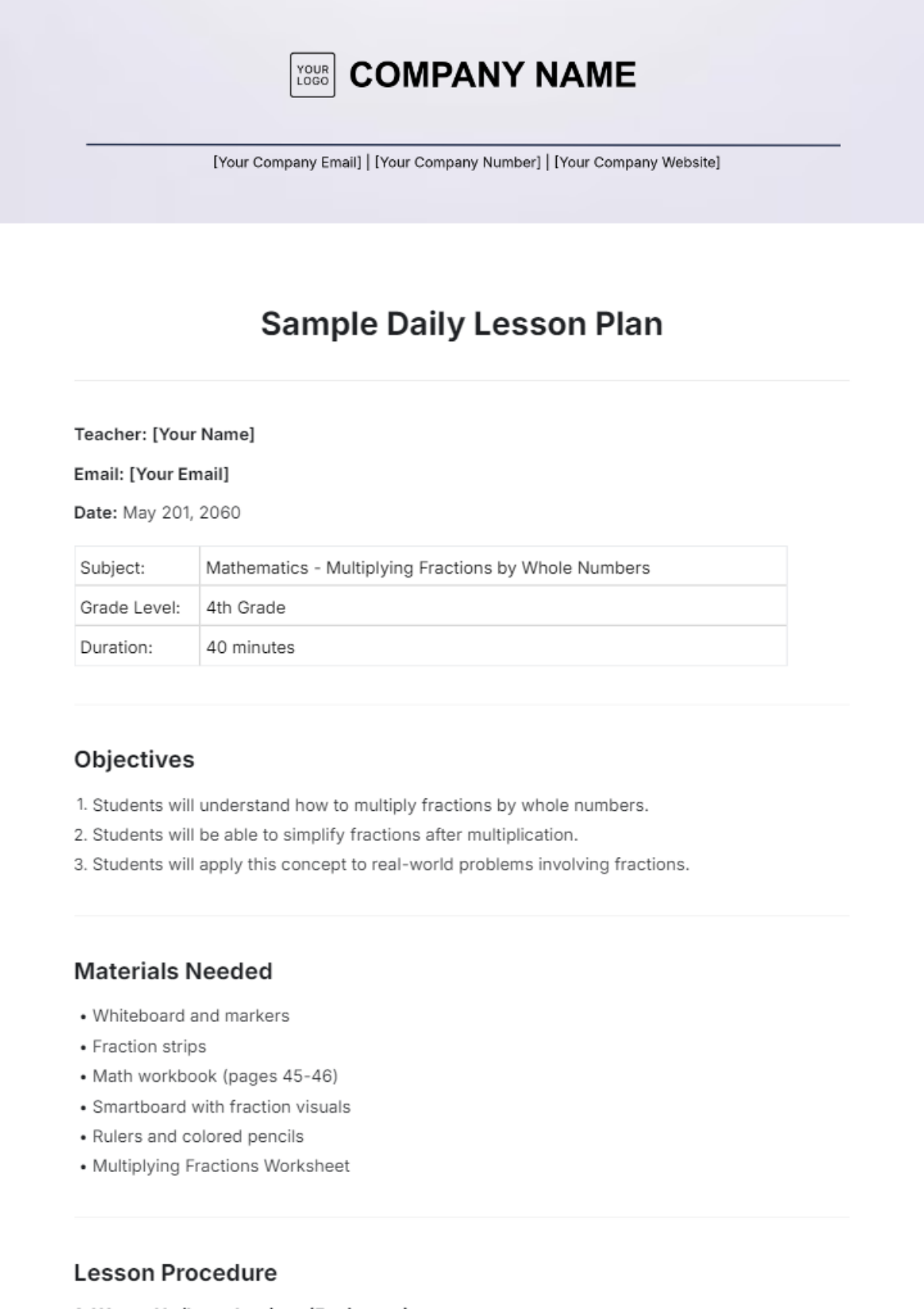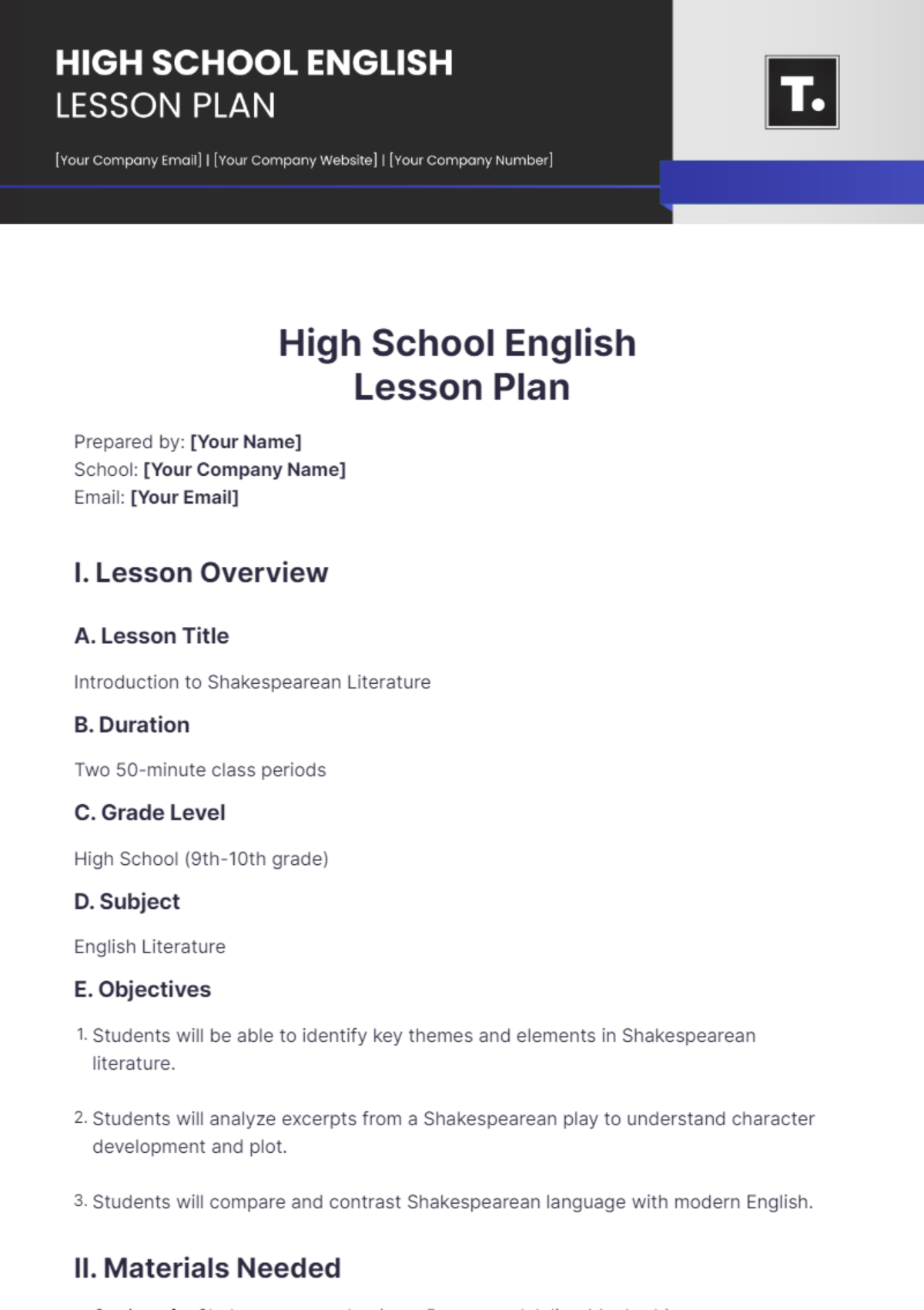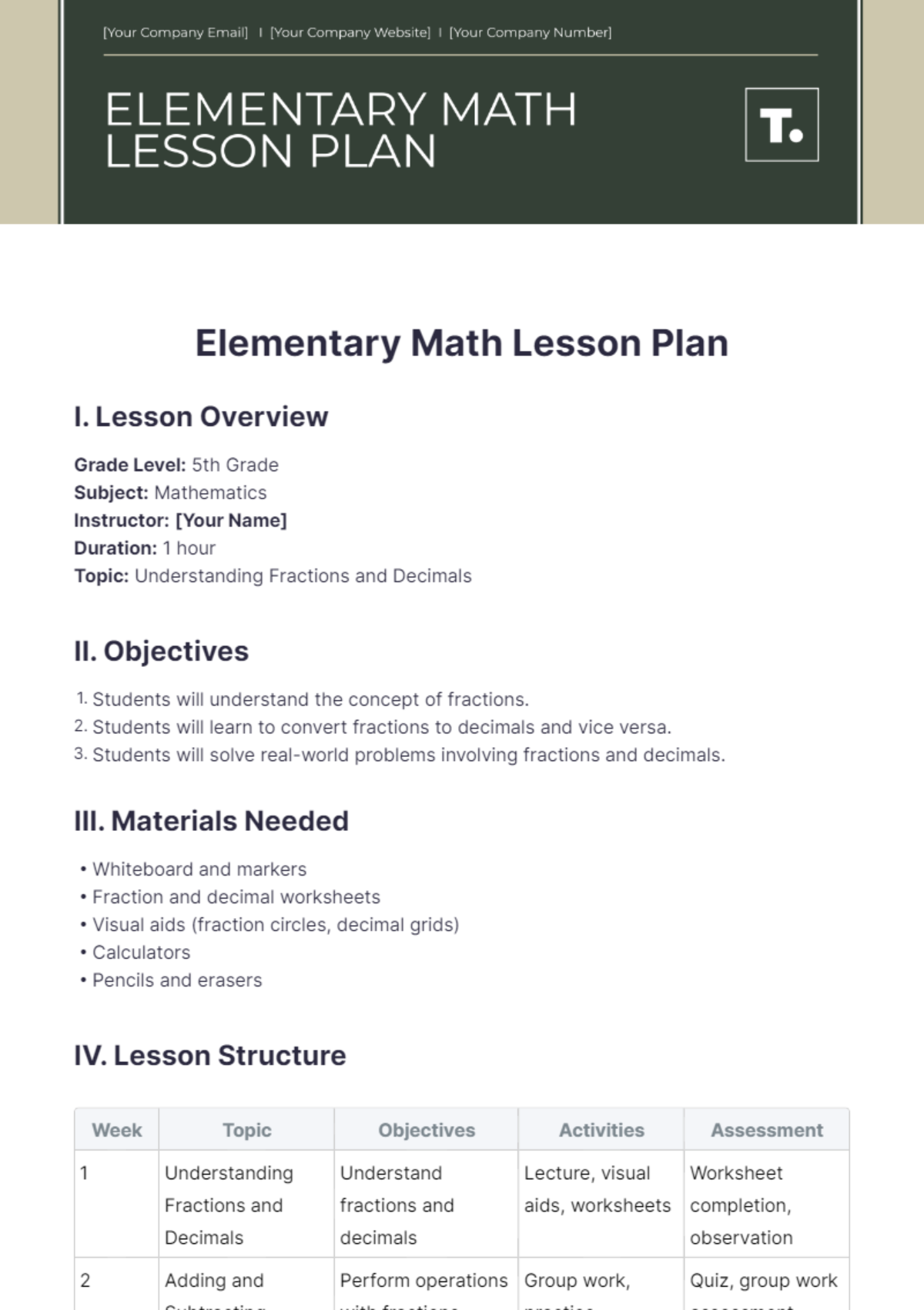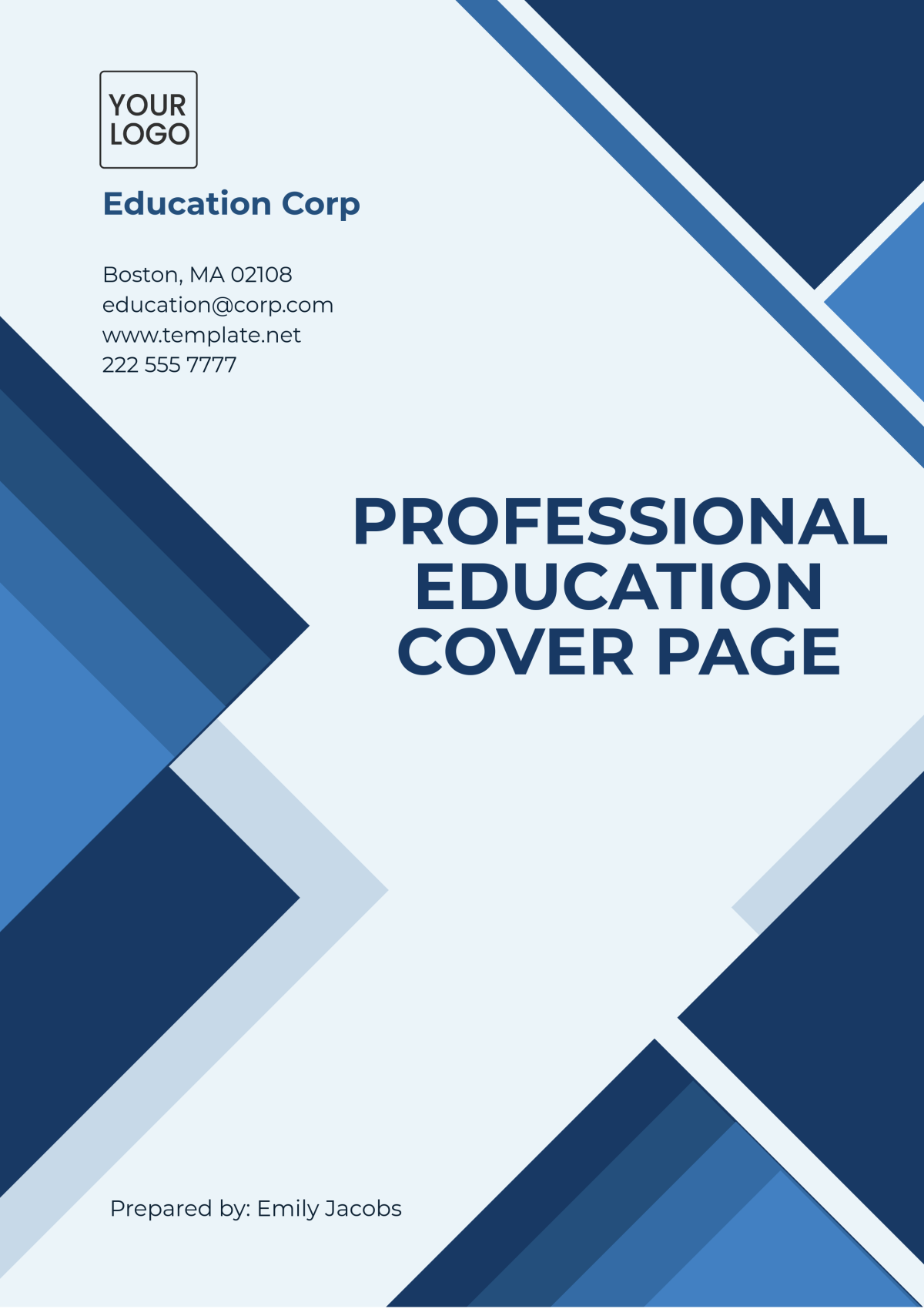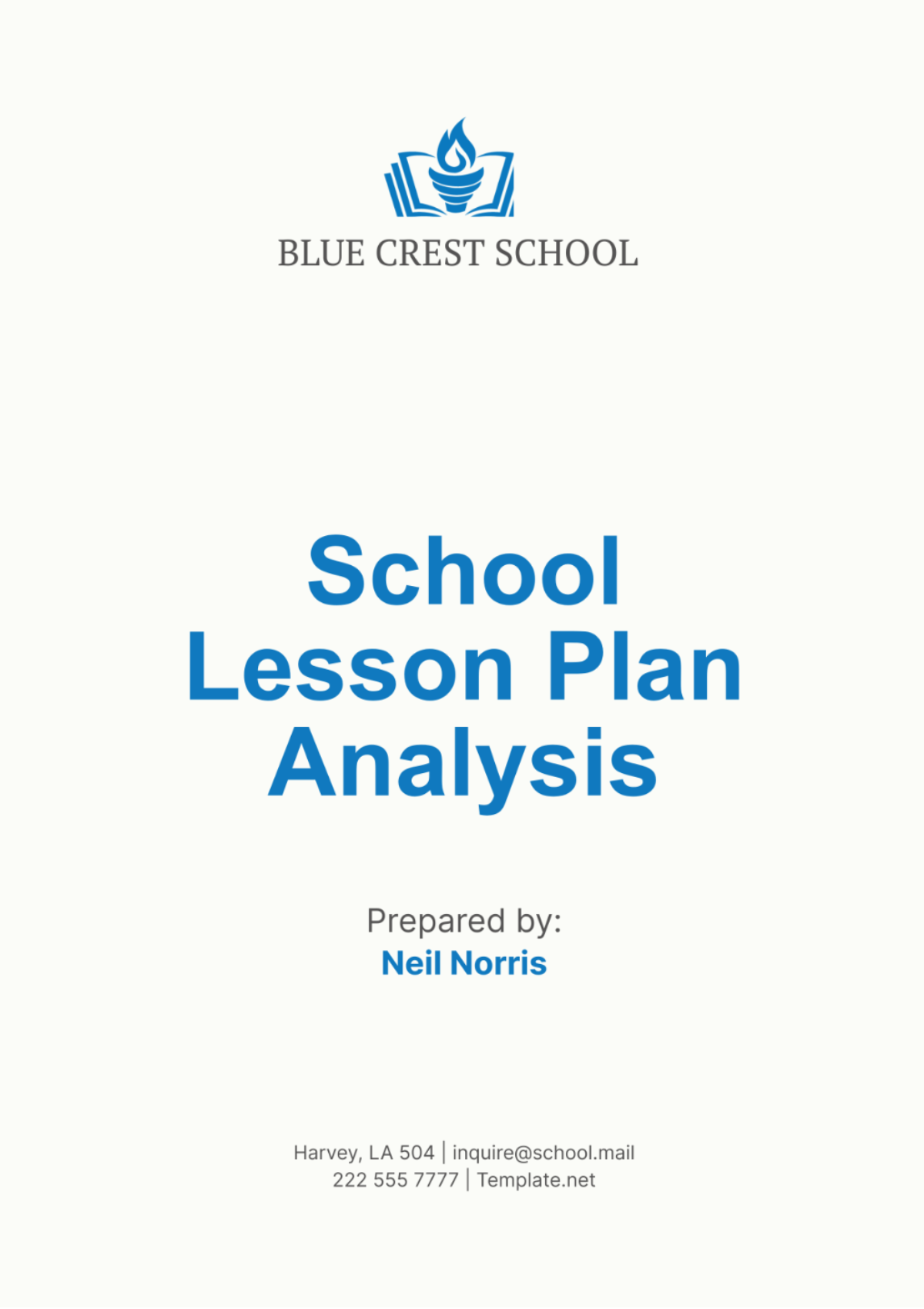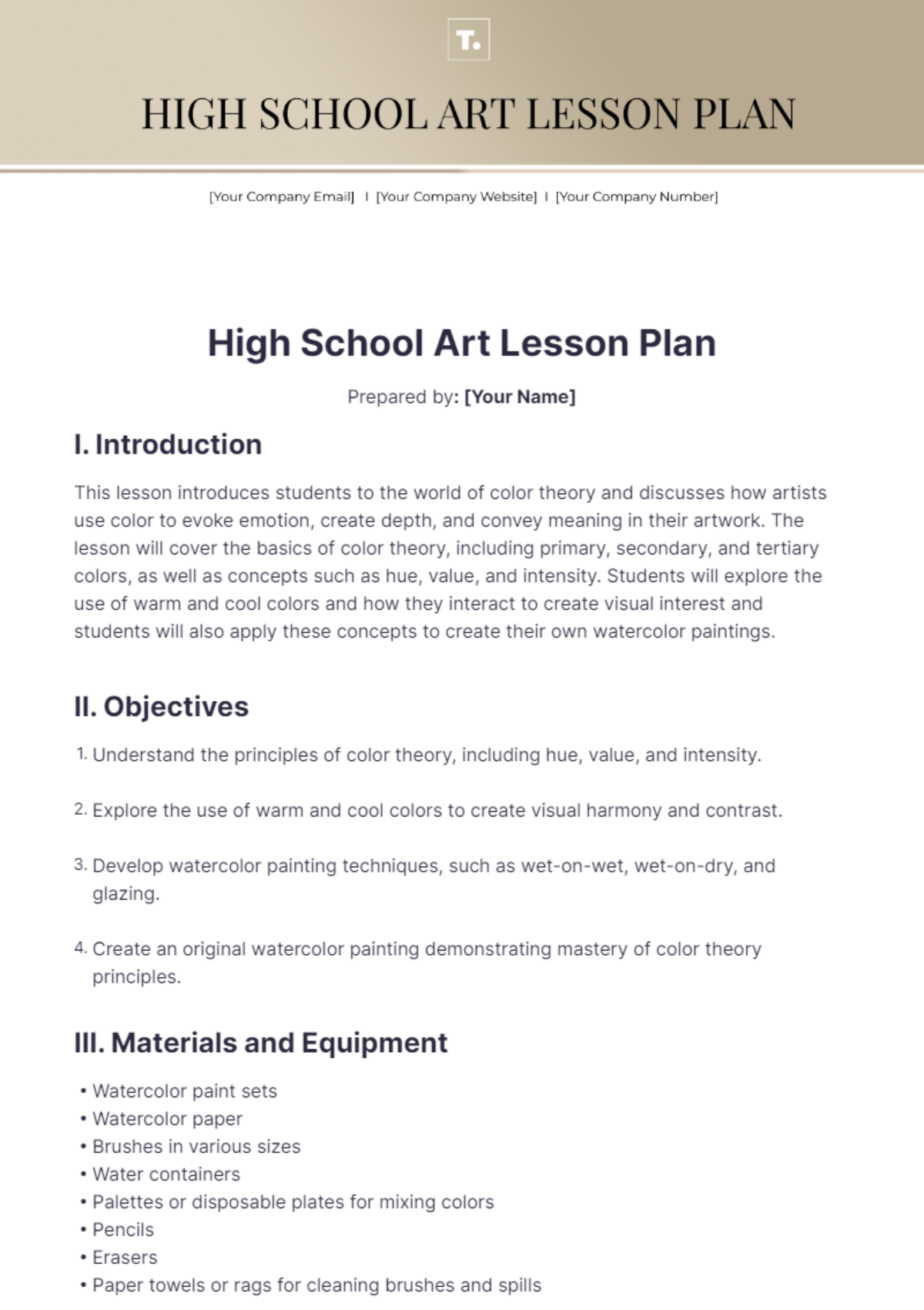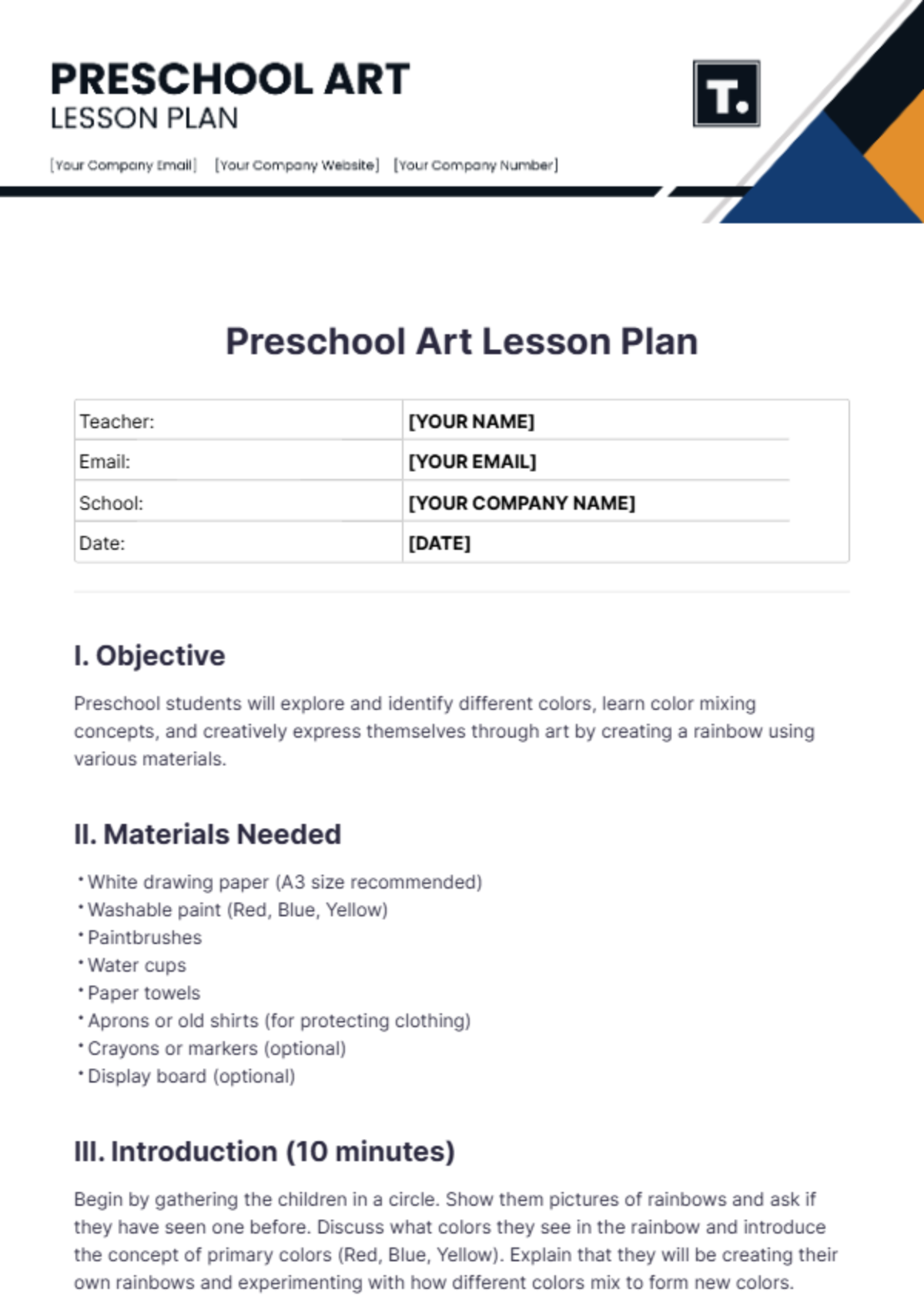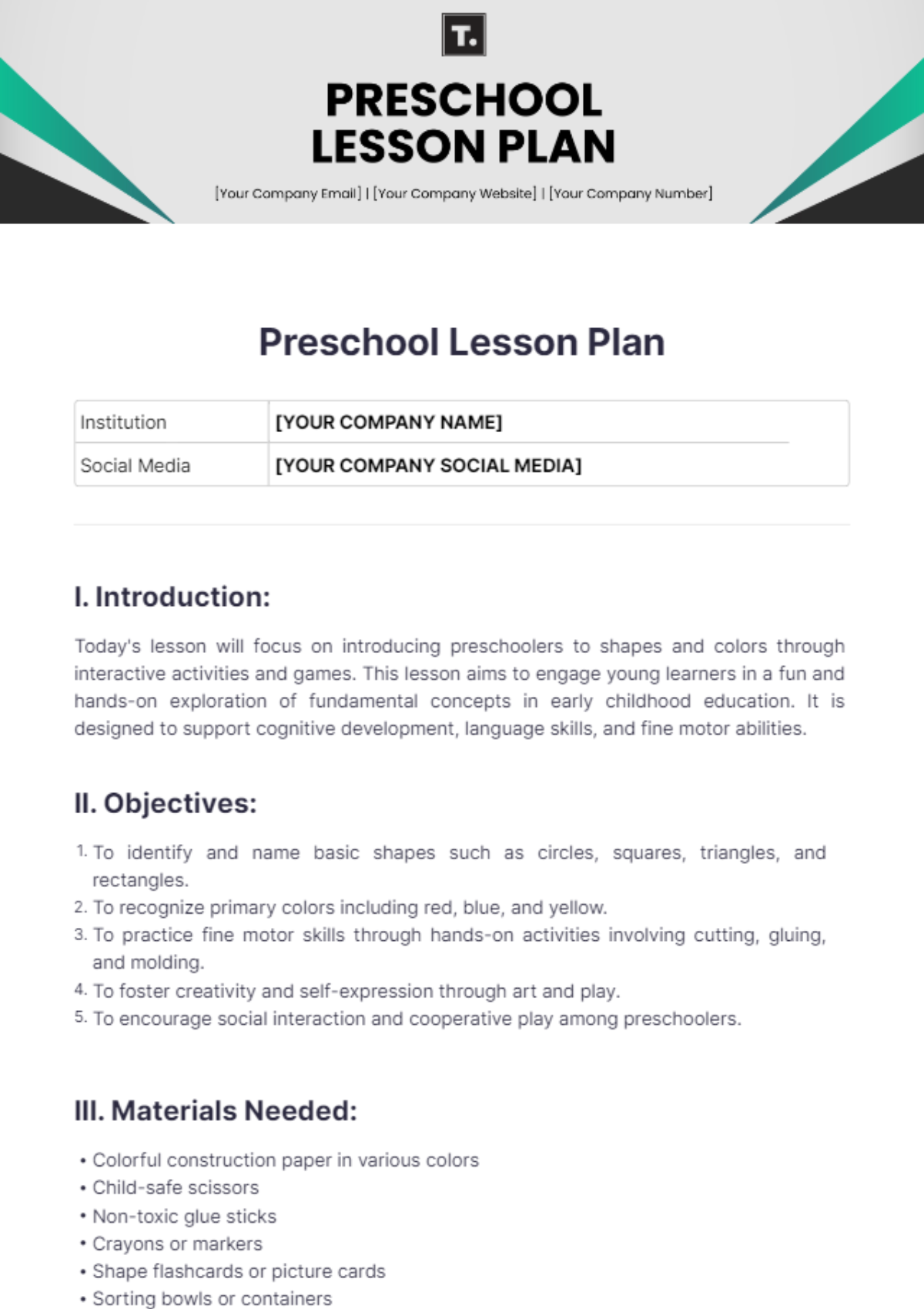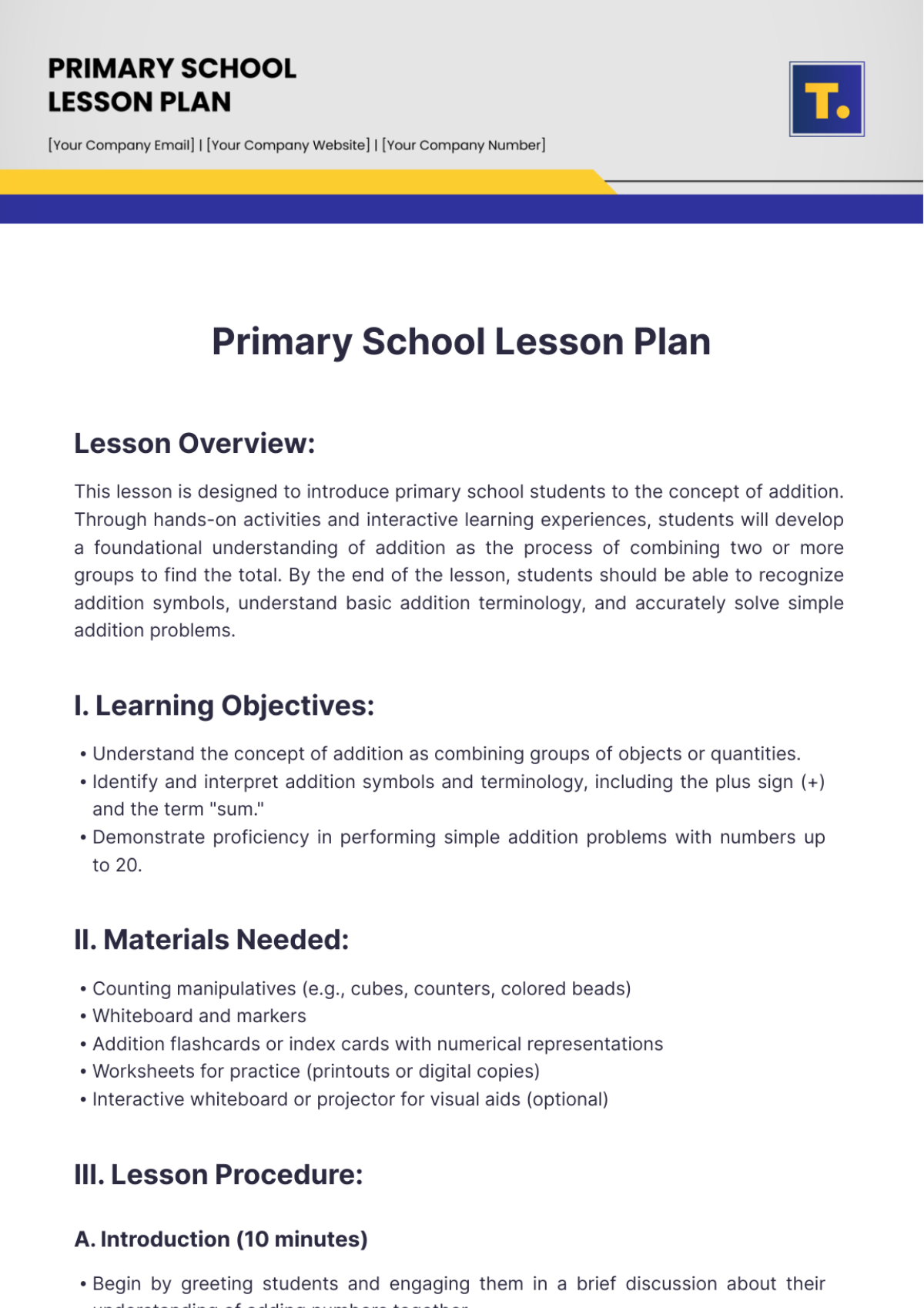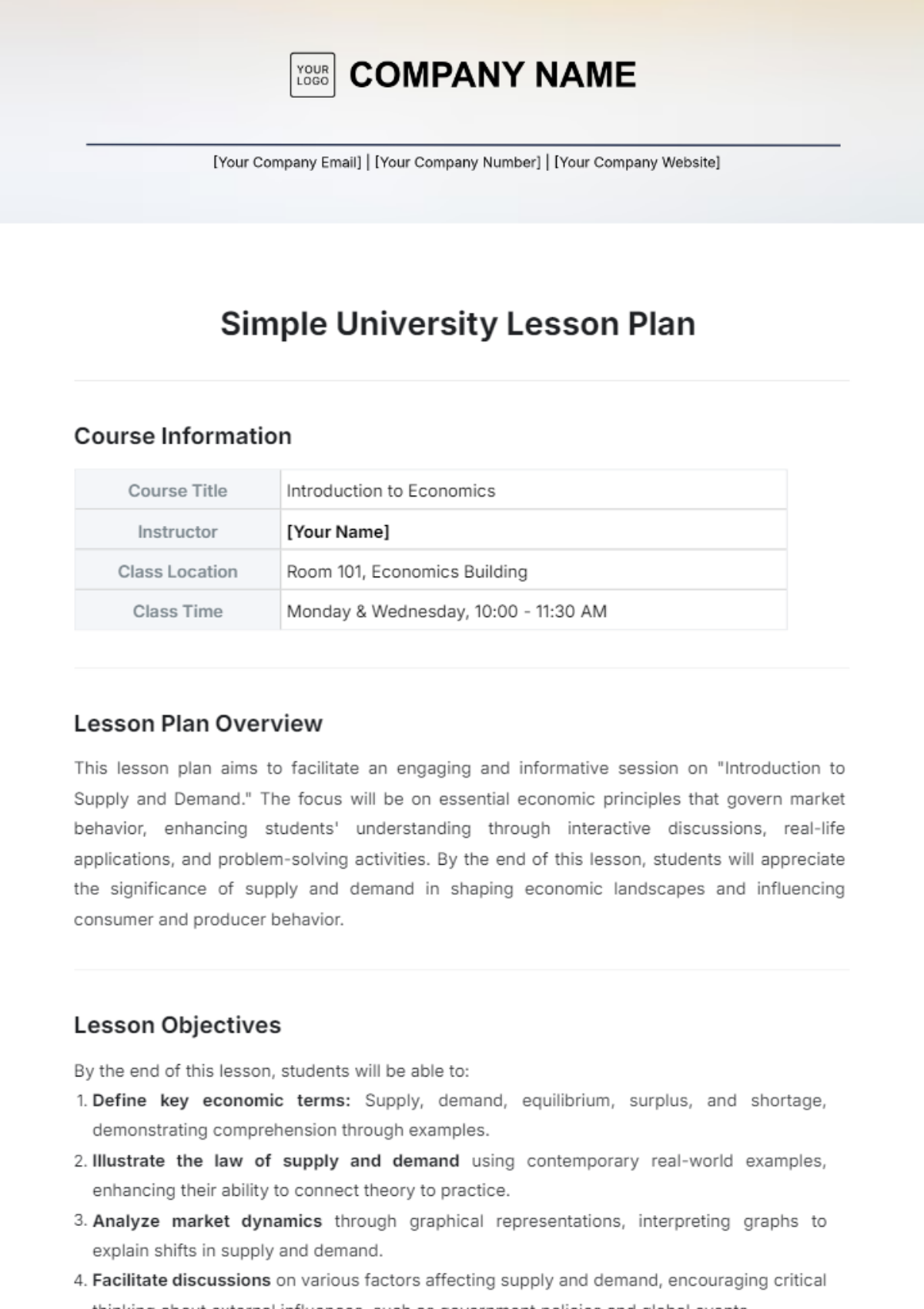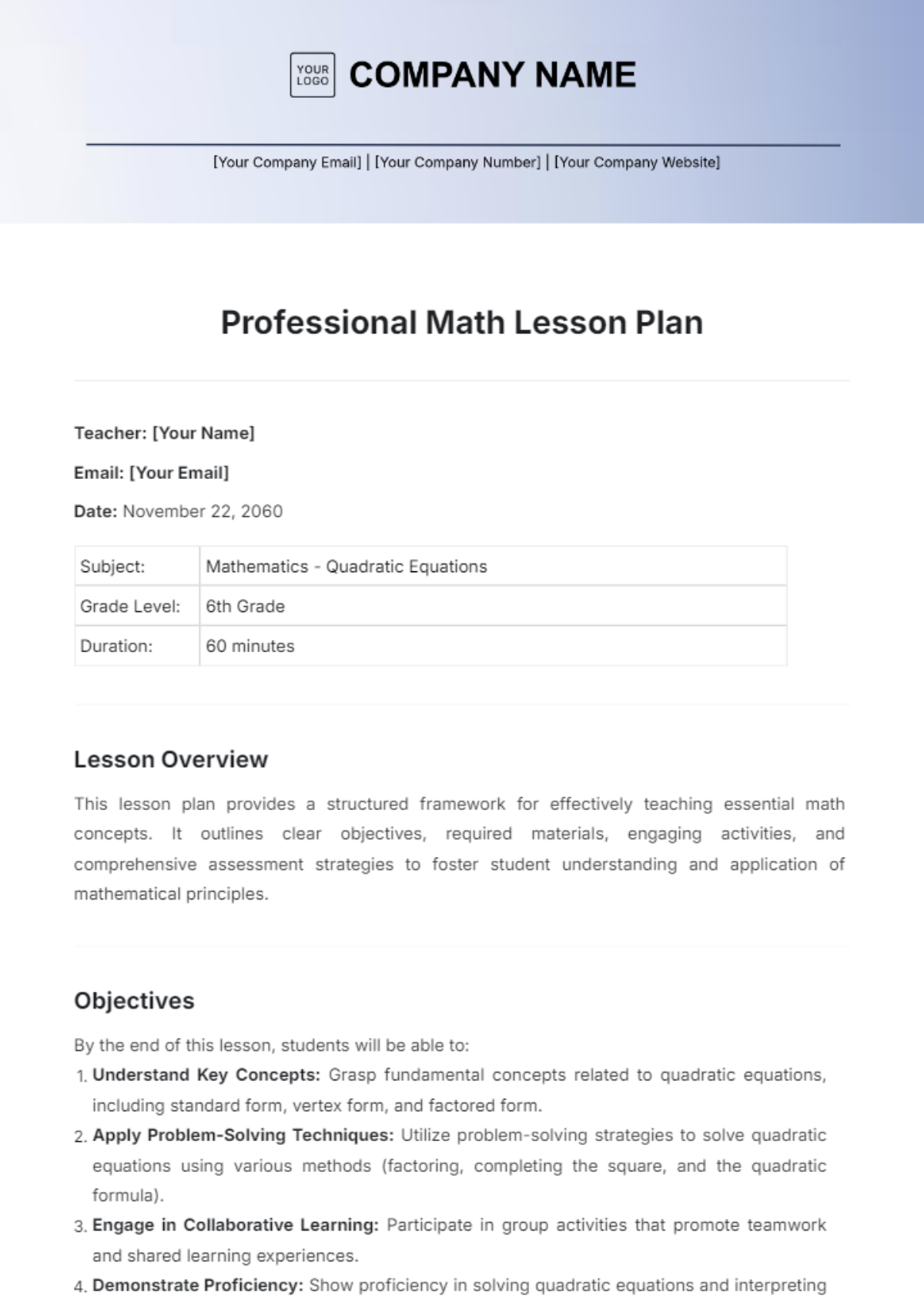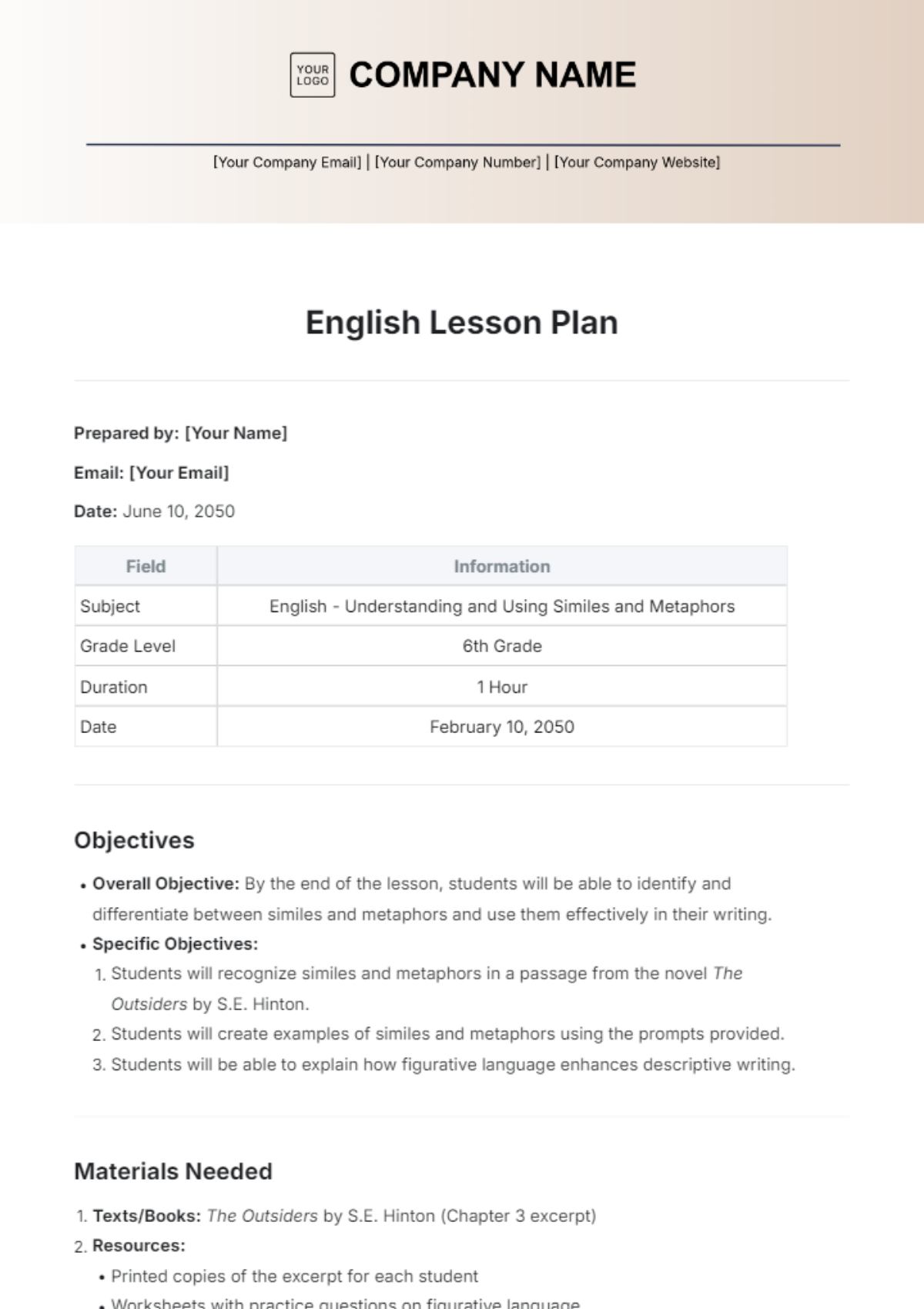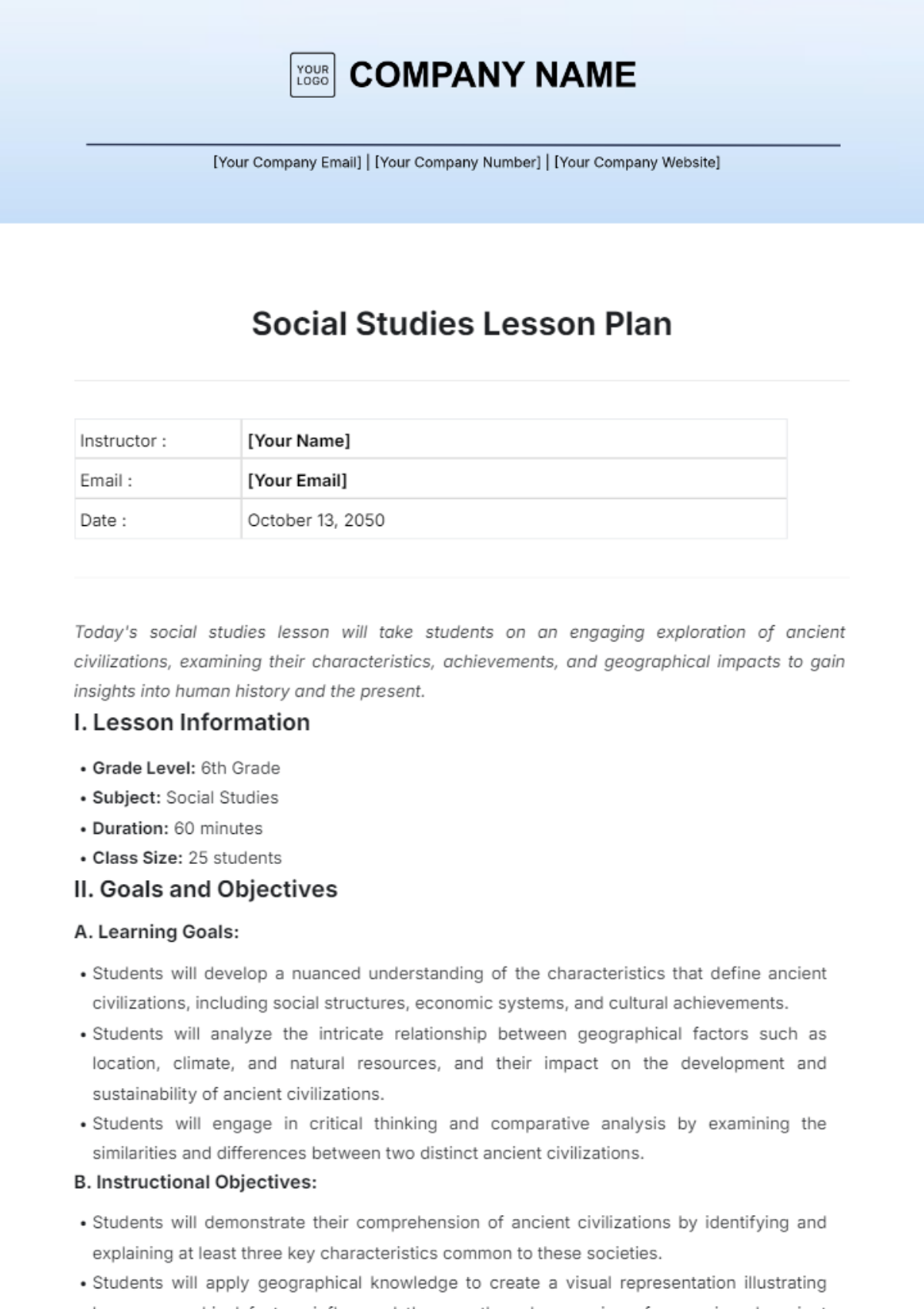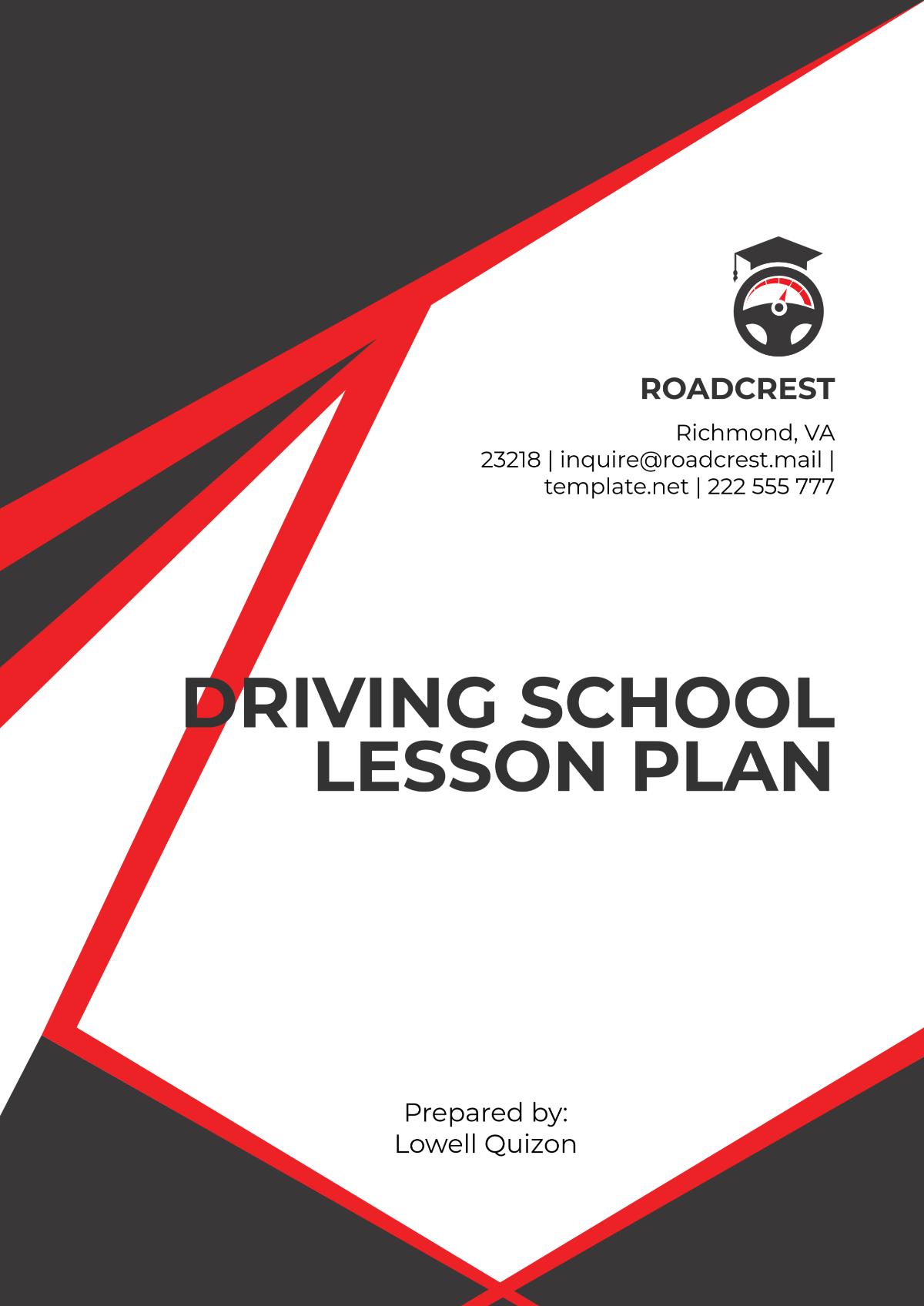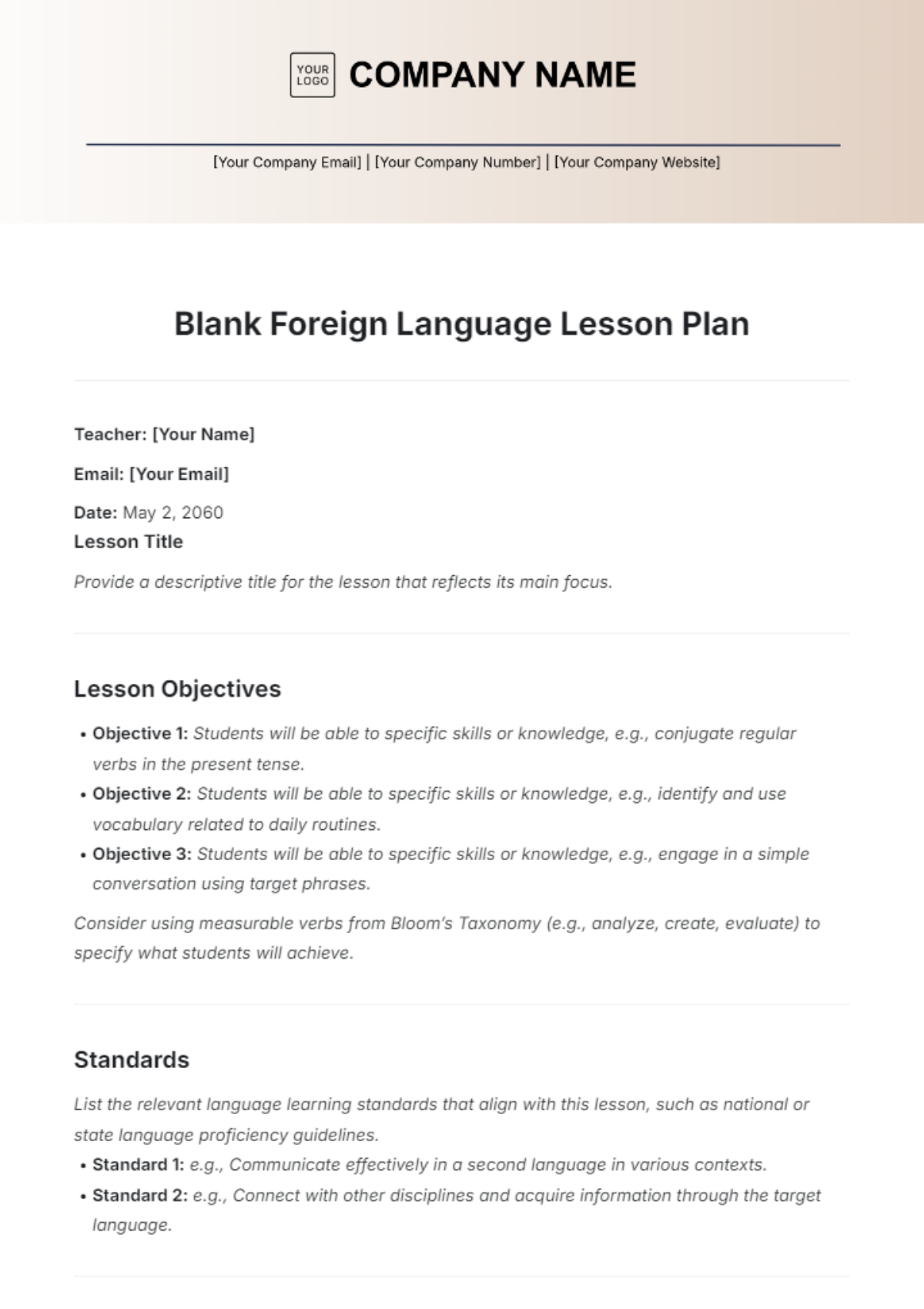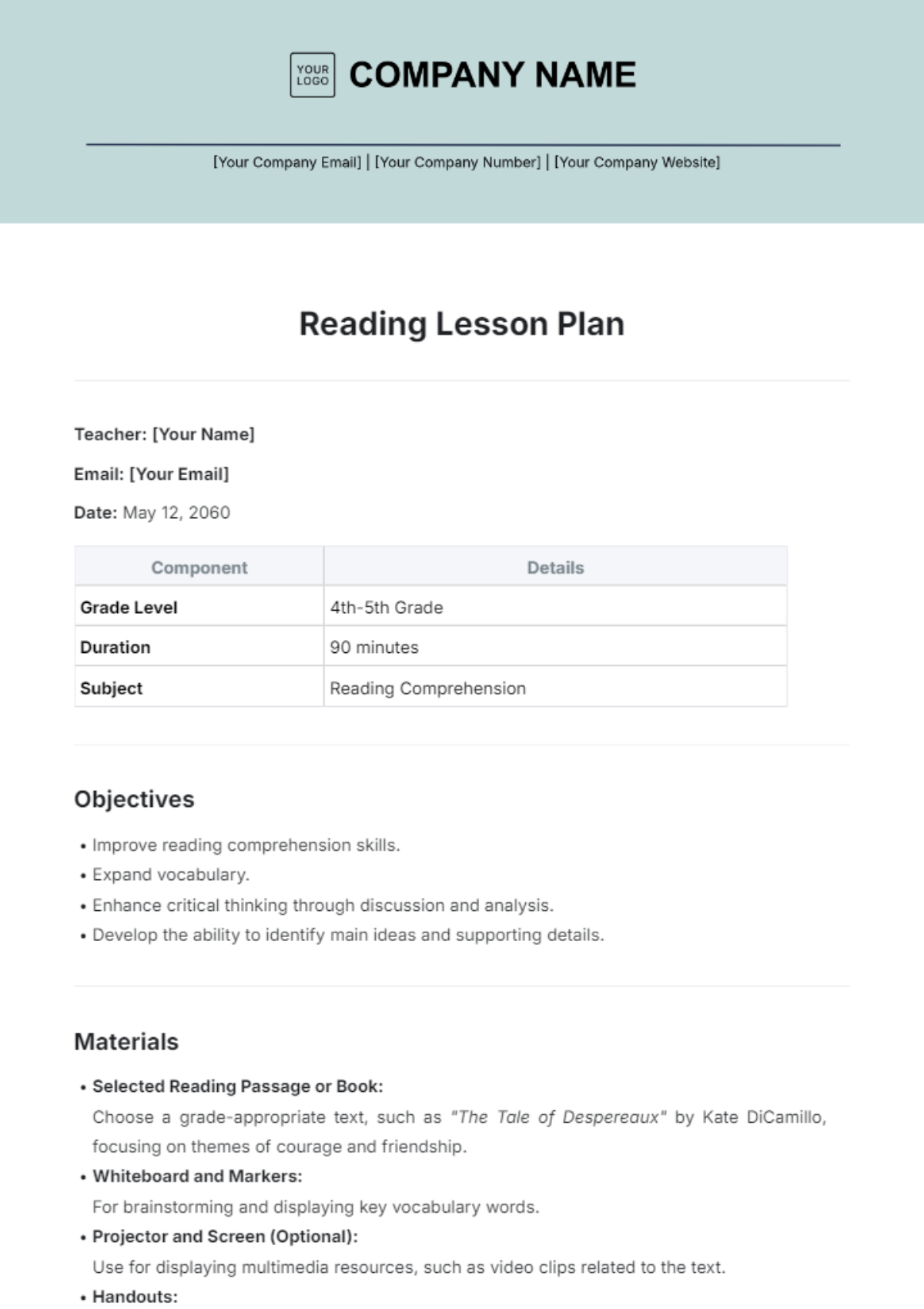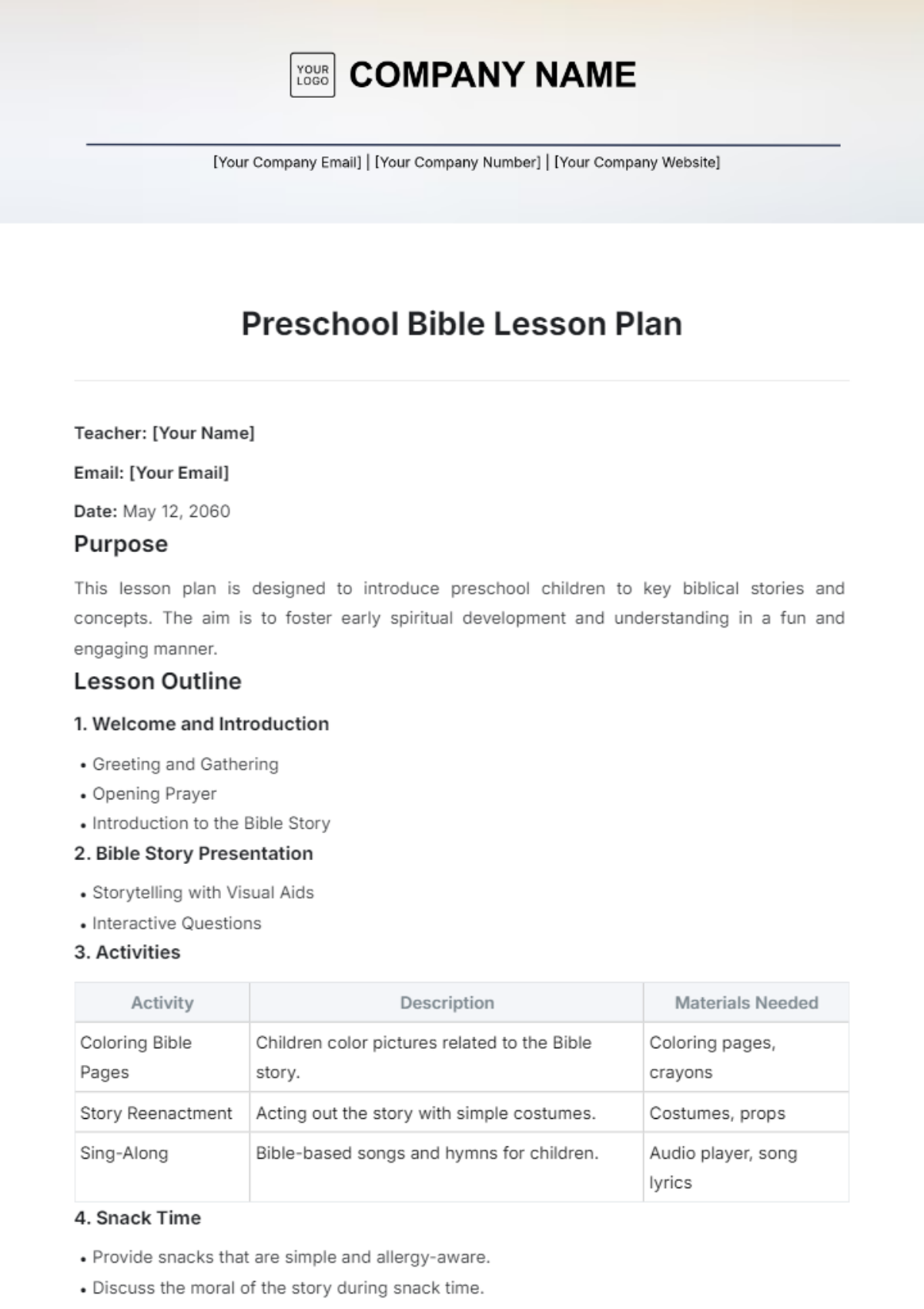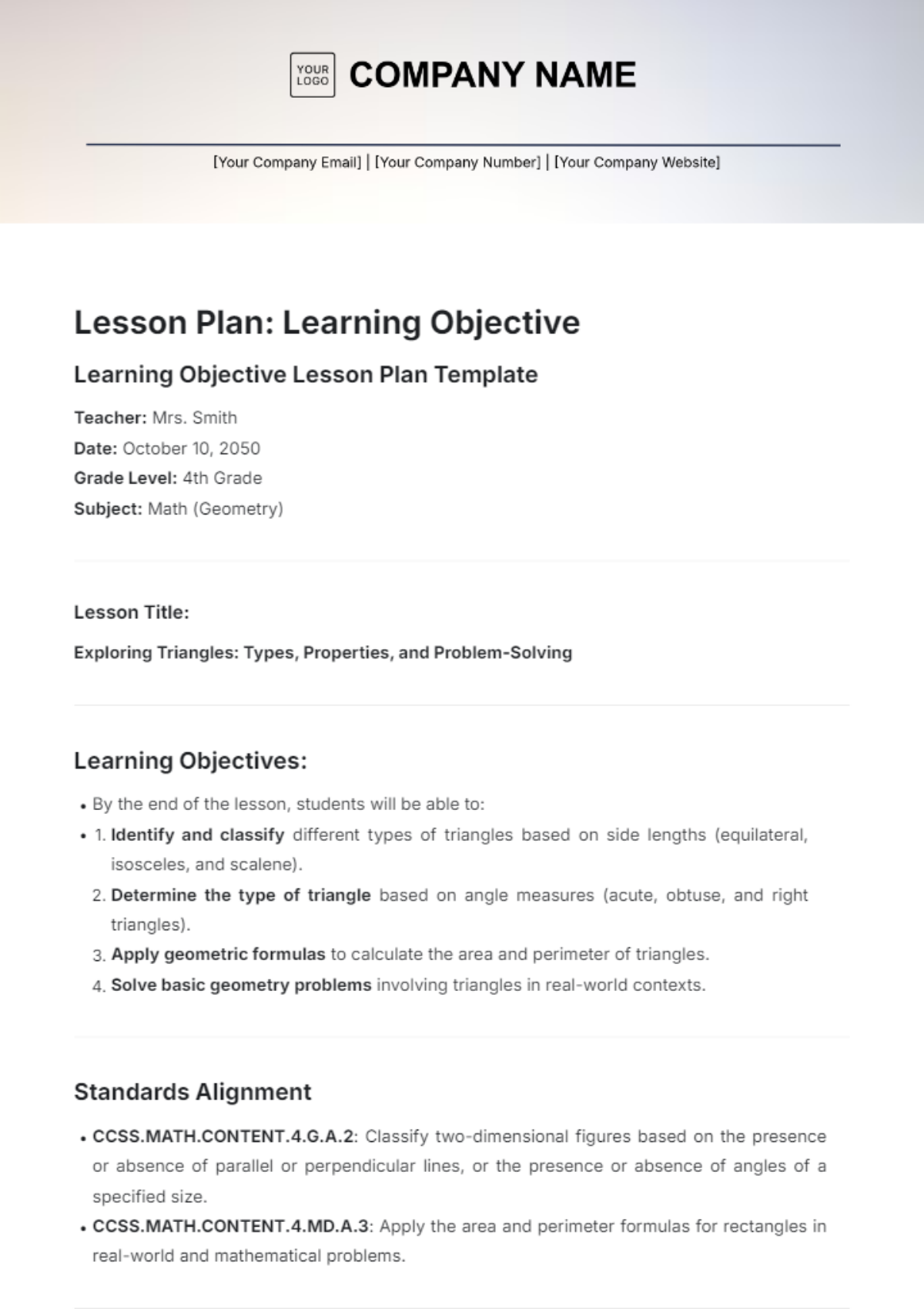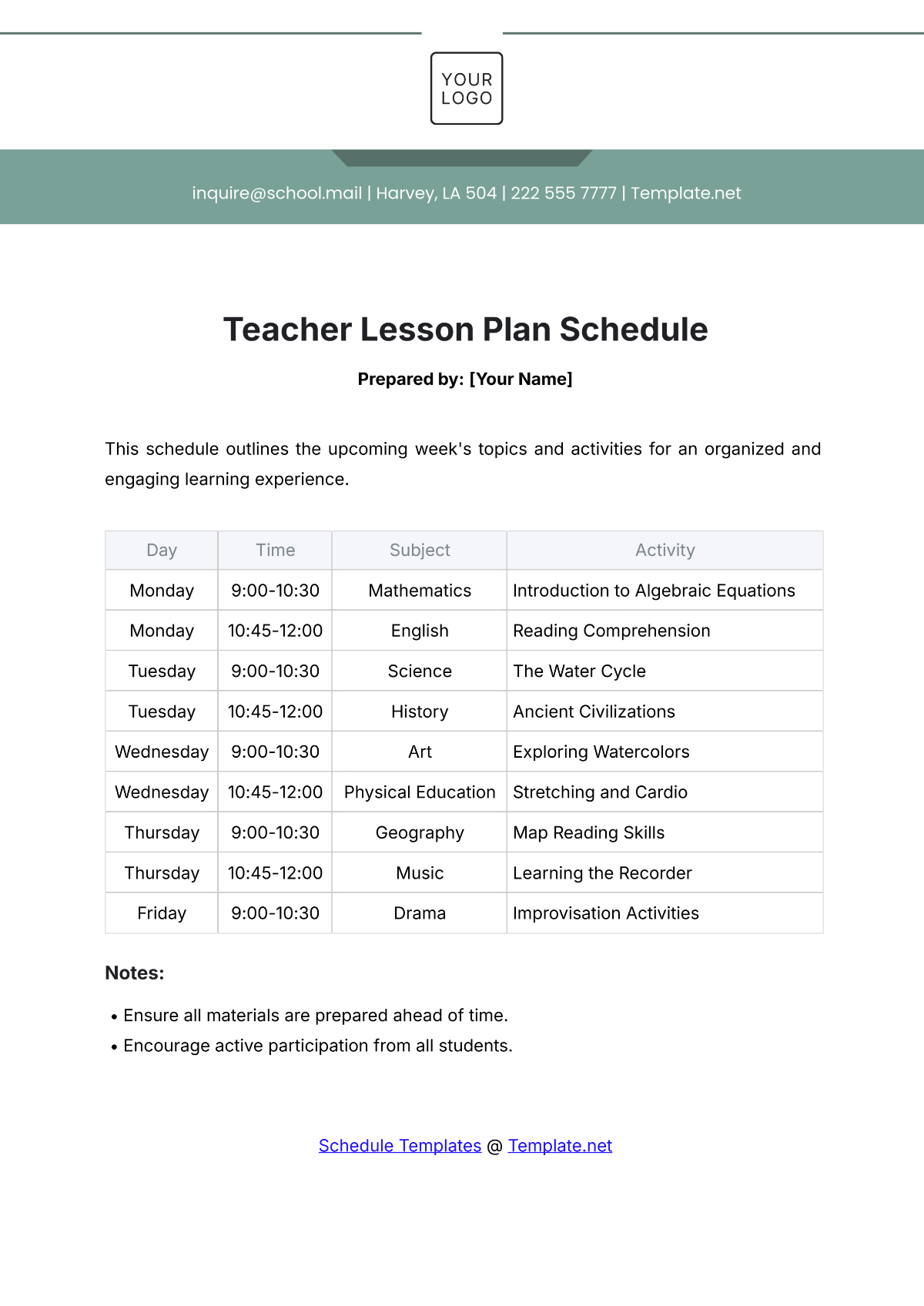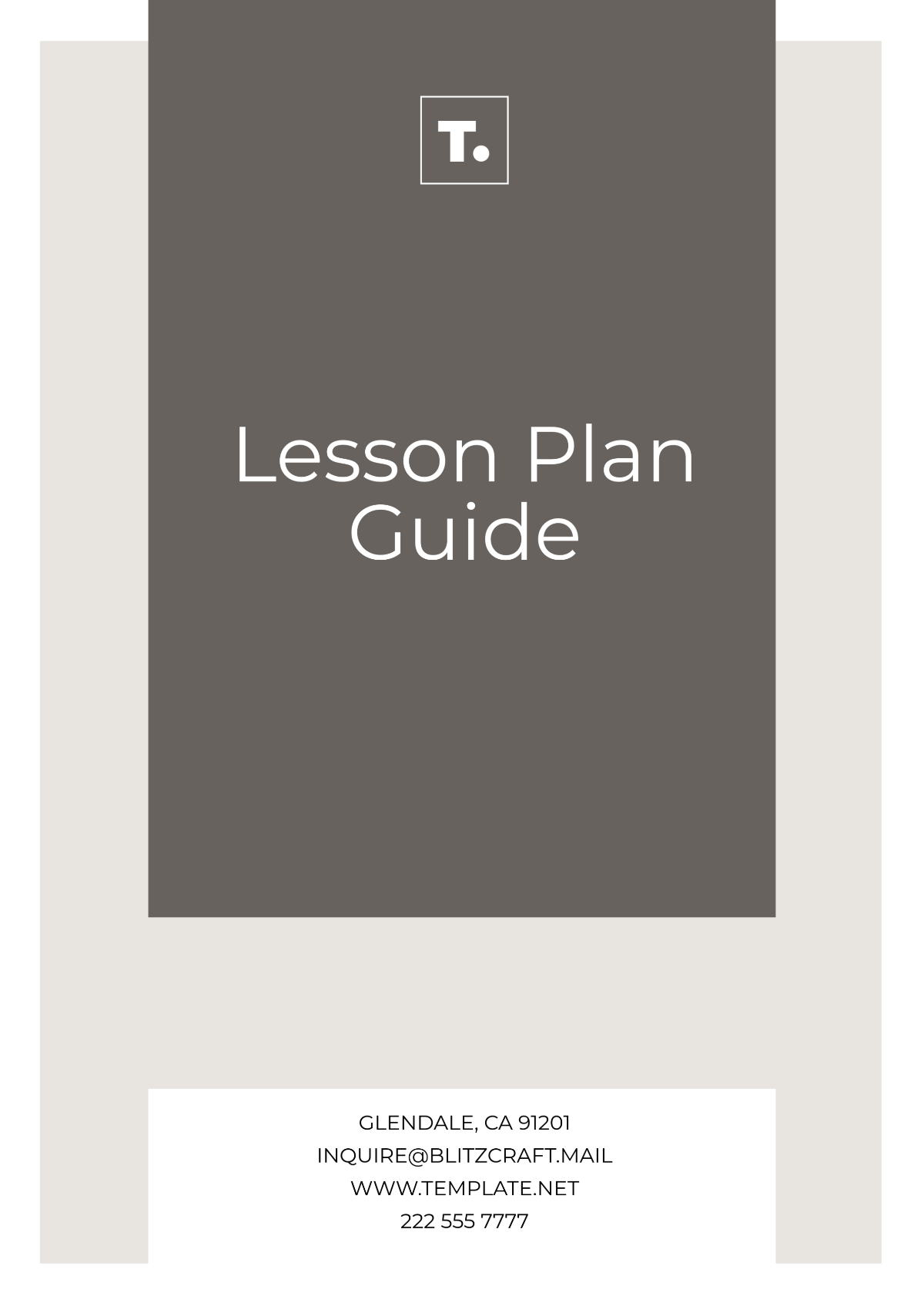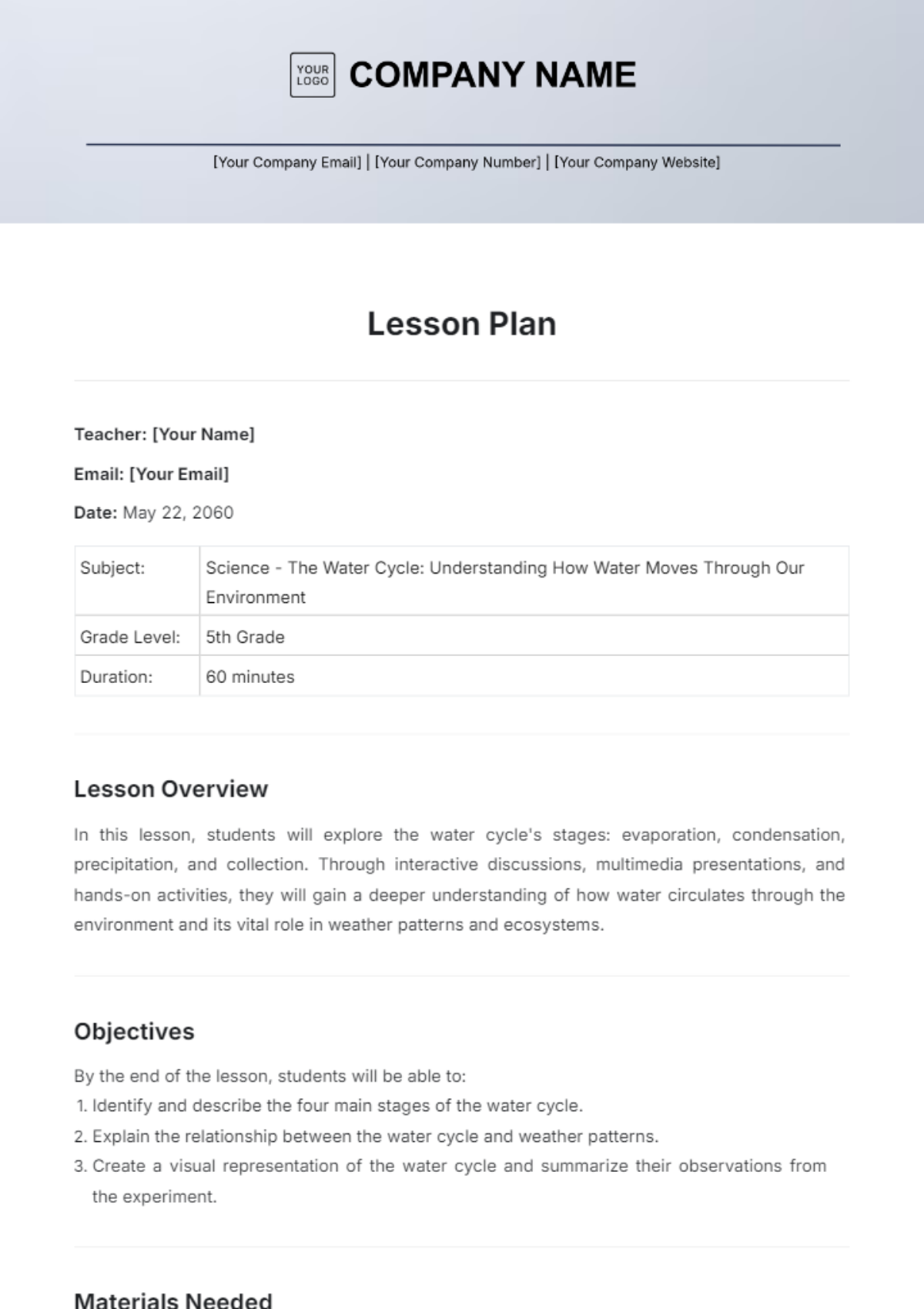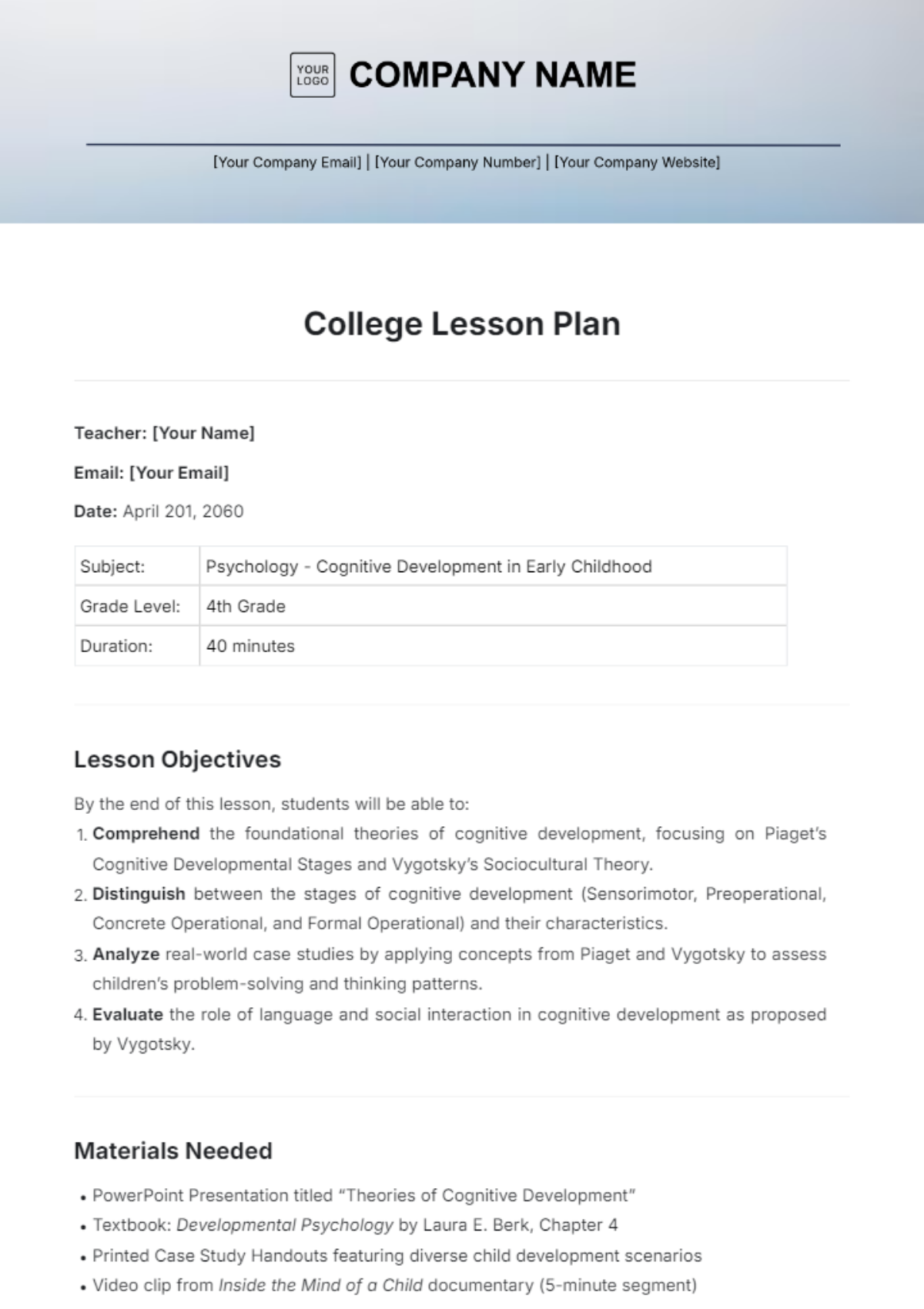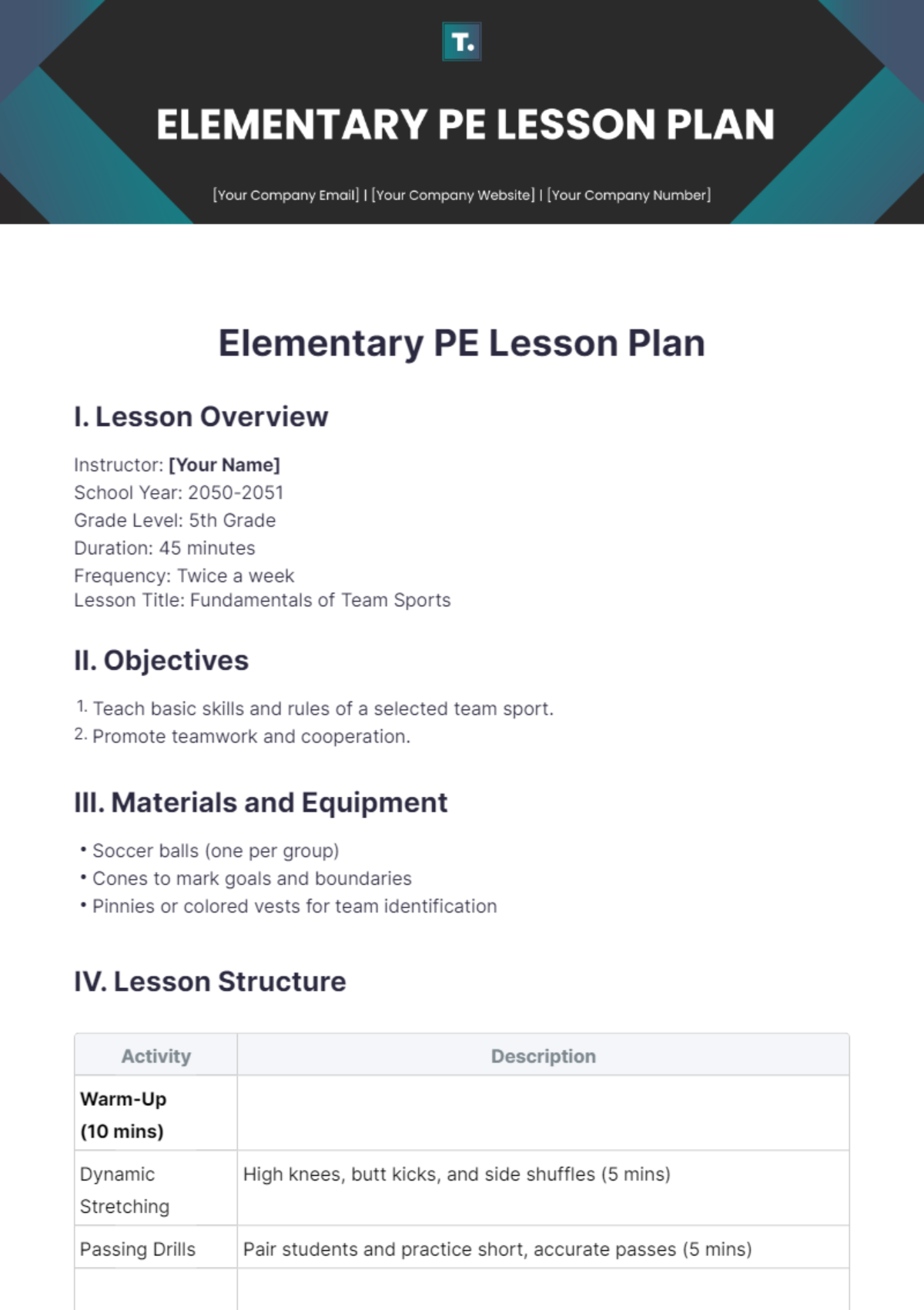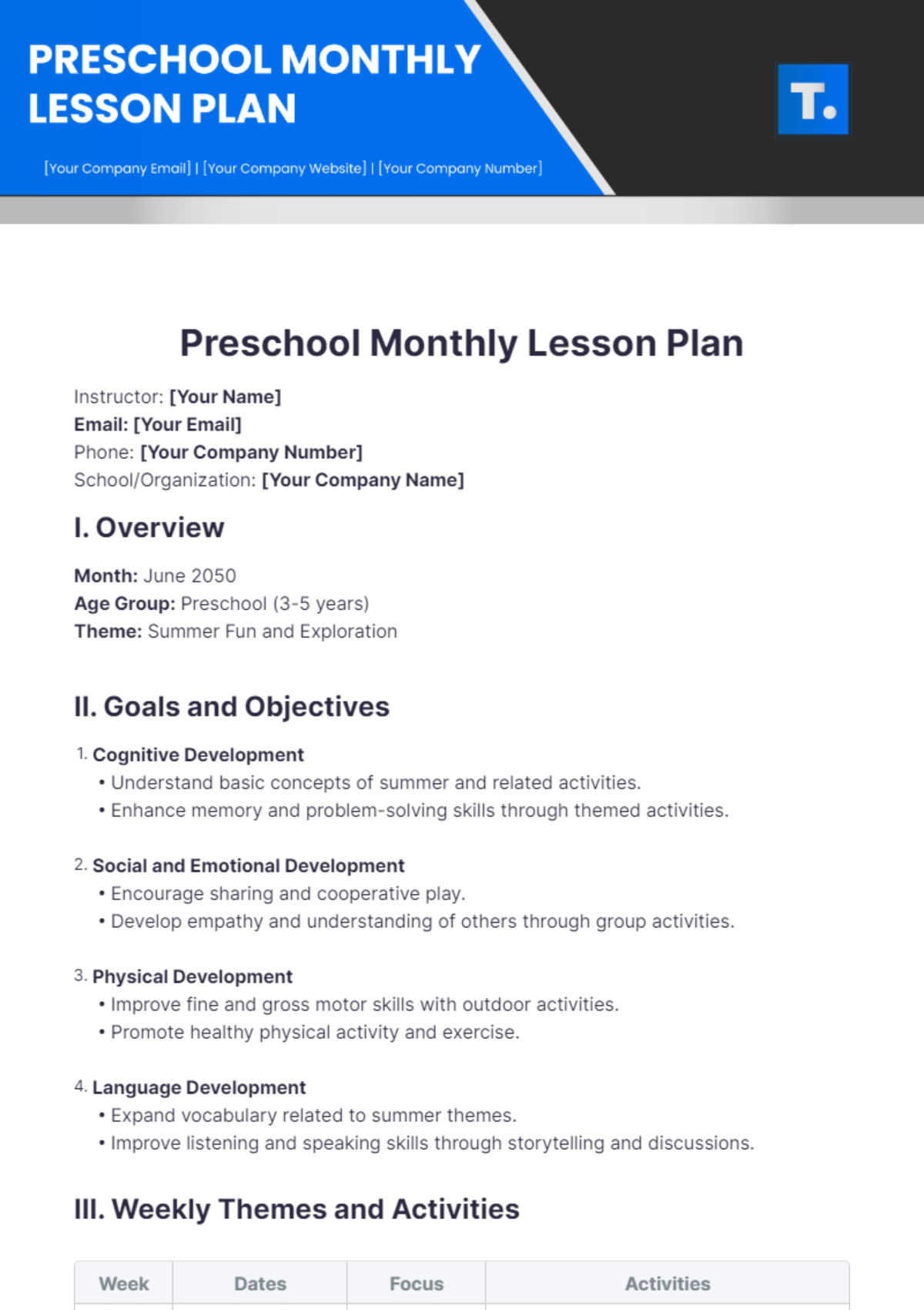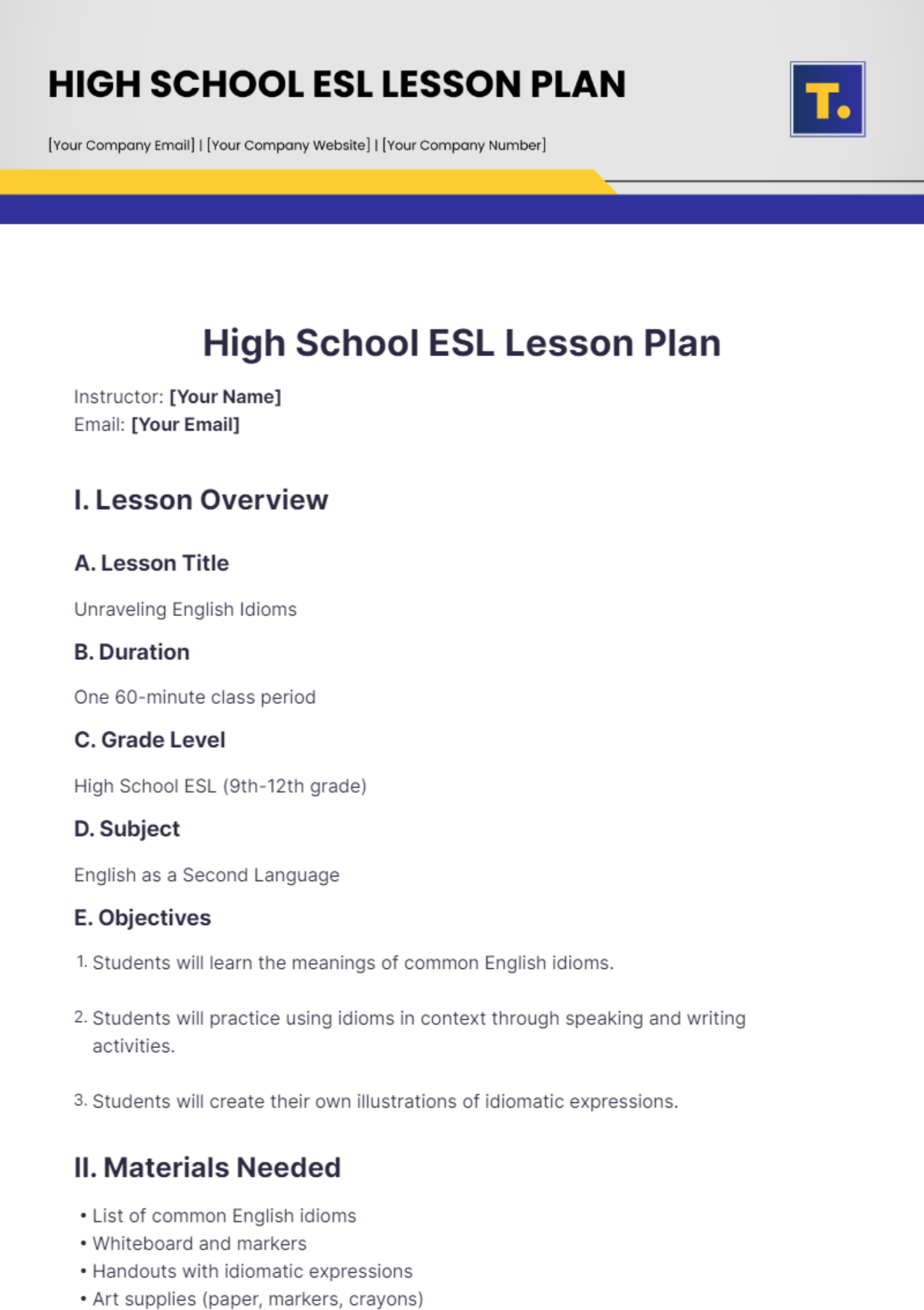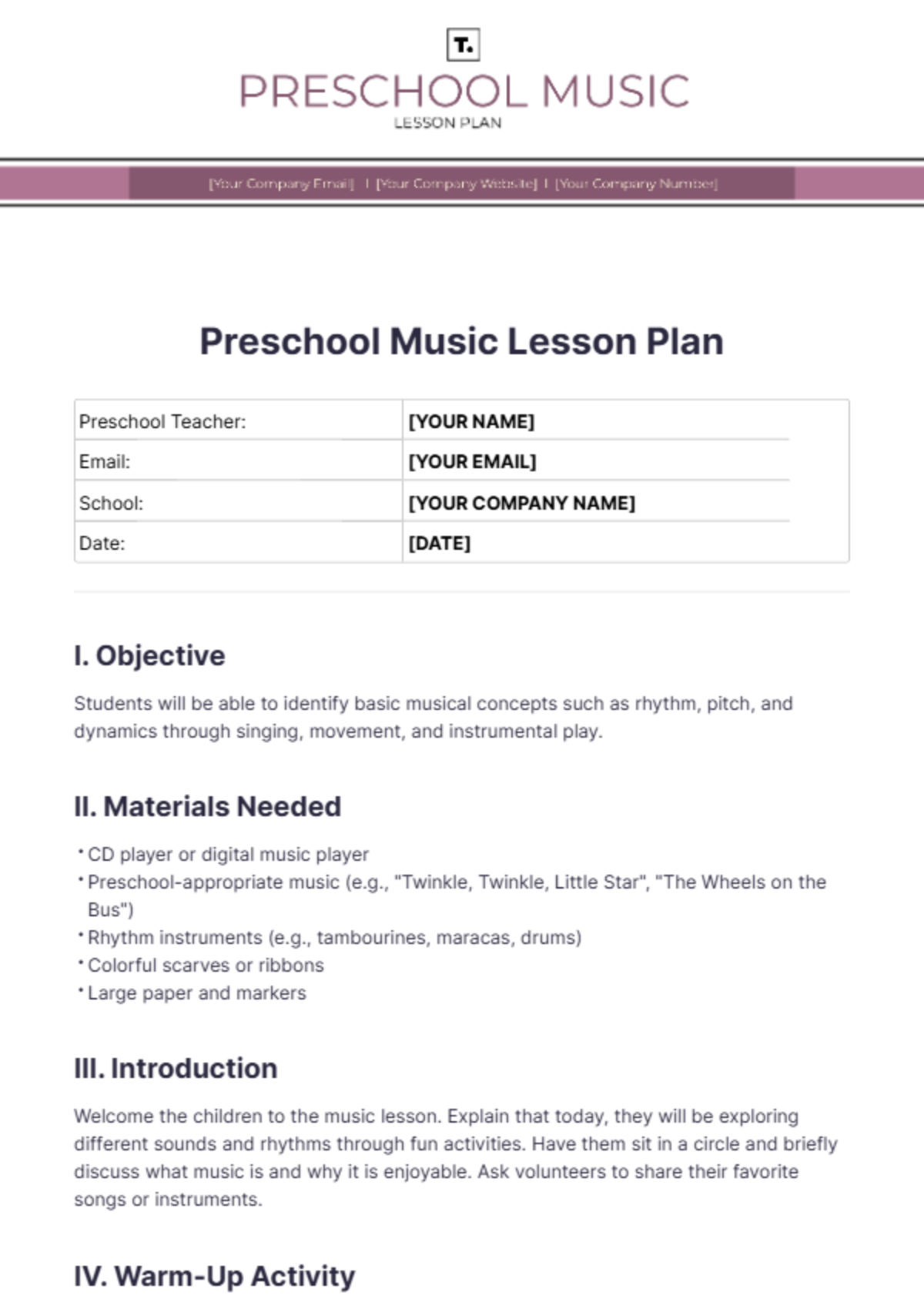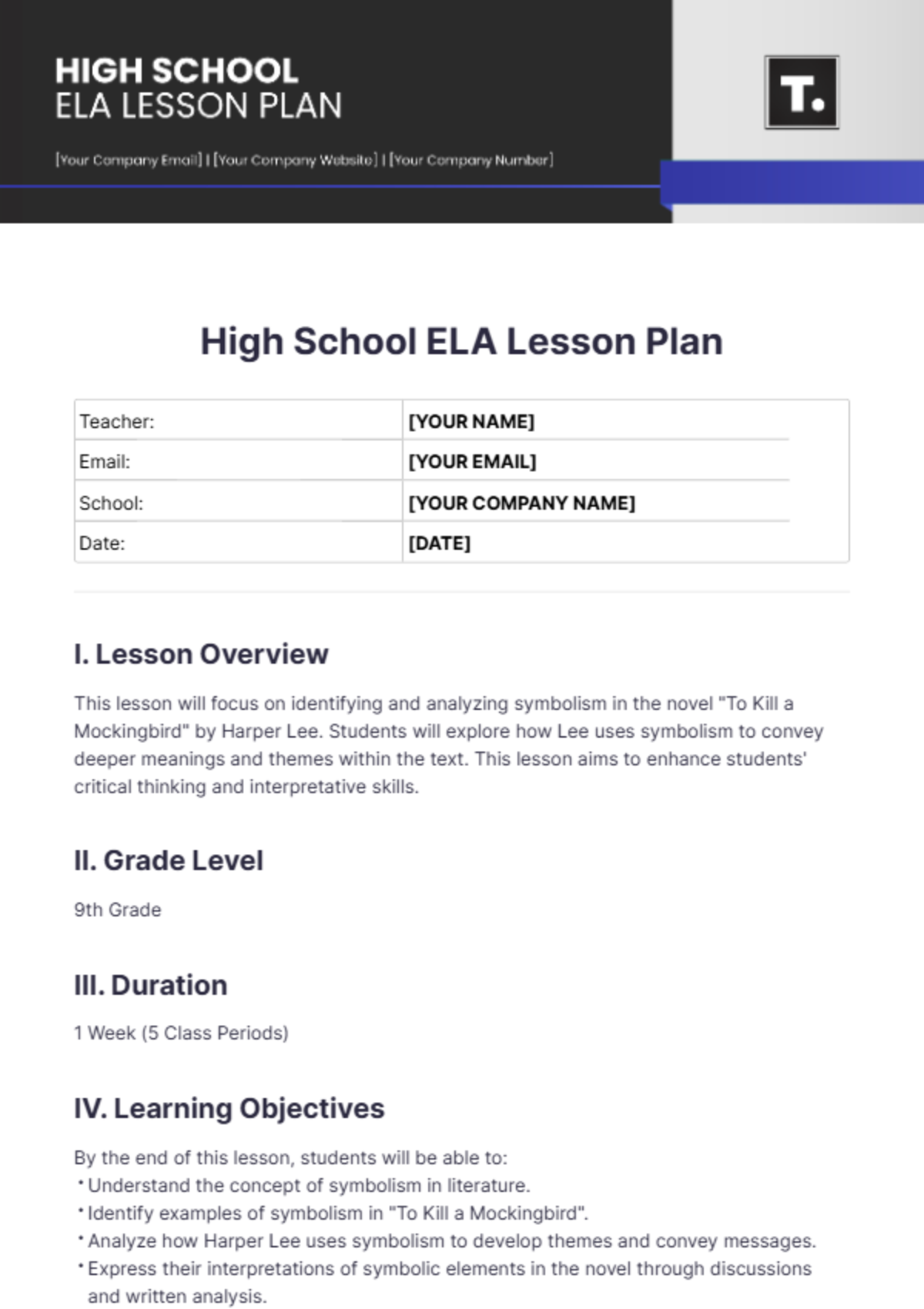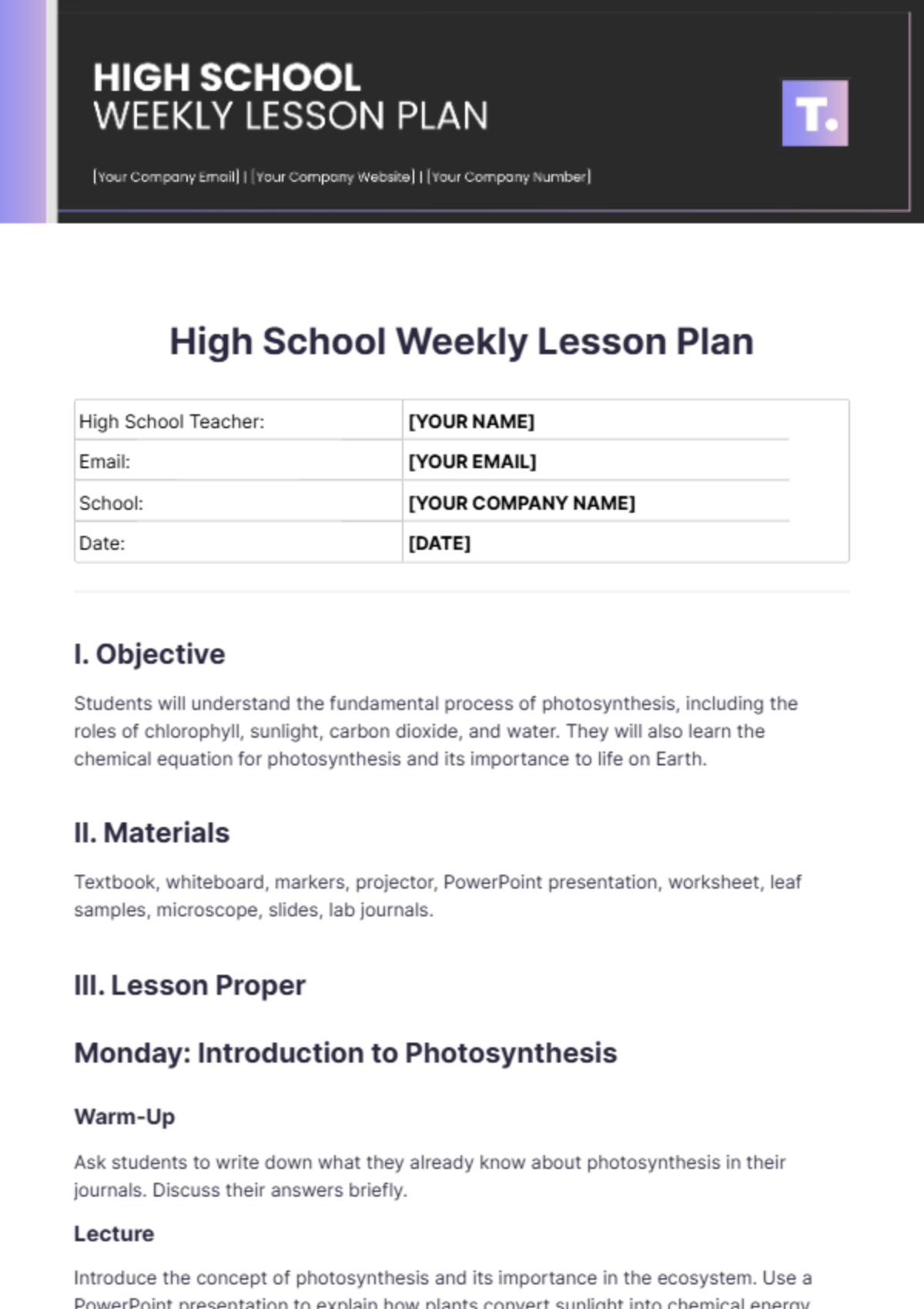Science Lesson Plan Layout
Teacher: [Your Name]
Email: [Your Email]
Date: November 22, 2060
Subject: | Science |
Grade Level: | 5th Grade |
Duration: | 60 minutes |
Lesson Overview
Objective:
(Clearly define the learning objectives. What specific skills, knowledge, or concepts should students master by the end of the lesson? Consider using Bloom's Taxonomy to frame your objectives.)Standards Addressed:
(Identify relevant state or national standards that this lesson meets, ensuring alignment with curriculum goals.)
Materials Needed
Equipment:
(List all materials and equipment required for the lesson, such as lab instruments, digital tools, and safety equipment.)Supplies:
(Include other necessary supplies like worksheets, models, or art materials.)
Lesson Structure
Introduction (10 minutes):
Hook/Engagement Activity:
(Describe a compelling question, real-world scenario, or demonstration to capture students’ interest. Consider using multimedia resources or interactive elements.)Background Knowledge:
(Discuss any prerequisite knowledge or concepts students need to understand the lesson. This could include a brief review or a think-pair-share activity.)
Instruction (20-25 minutes):
Direct Instruction:
(Outline the key concepts and information you will present. Use visuals, interactive simulations, or models to enhance understanding. Encourage student participation through questioning and discussion.)Guided Practice:
(Detail activities where students will practice new skills with your support. This could involve collaborative group work, hands-on experiments, or problem-solving tasks.)
Independent Practice (20-25 minutes):
Activity/Experiment:
(Describe the specific hands-on activity or experiment students will conduct independently. Ensure it aligns with the lesson objectives and allows for exploration and inquiry.)Worksheets/Assessments:
(Include any worksheets, quizzes, or assessments that students will complete, providing clear instructions and expectations.)
Closure (10 minutes):
Review:
(Summarize the key points of the lesson, encouraging student reflection and discussion. Use strategies like exit tickets or quick polls to assess understanding.)Extension Activity:
(Suggest additional resources or activities for students who want to explore the topic further, such as research projects or online simulations.)
Differentiation
Strategies for Diverse Learners:
(Describe how you will support students with different learning needs, such as English Language Learners, students with IEPs, or advanced learners. Consider varied instructional strategies, resources, and assessment methods to ensure all students can access the content.)
Assessment
Formative Assessment:
(Explain how you will gauge student understanding throughout the lesson. Include specific strategies such as questioning techniques, observation checklists, or informal assessments.)Summative Assessment:
(Detail any assessments that will occur at the end of the lesson to evaluate student learning, such as quizzes, projects, or presentations. Provide criteria for success.)
Reflection
Post-Lesson Reflection:
(After the lesson, reflect on what went well, what could be improved, and how students responded to the activities. Consider questions such as:
Did the students meet the learning objectives?
What strategies were most effective?
How can the lesson be improved for future classes?)
Additional Notes
Follow-Up Activities:
(Include ideas for follow-up lessons or activities that reinforce the concepts learned, allowing students to connect their learning to new contexts.)Parent/Guardian Communication:
(Consider how you will communicate with parents or guardians about the lesson, particularly if it involves student projects or assessments that may require support at home.)

